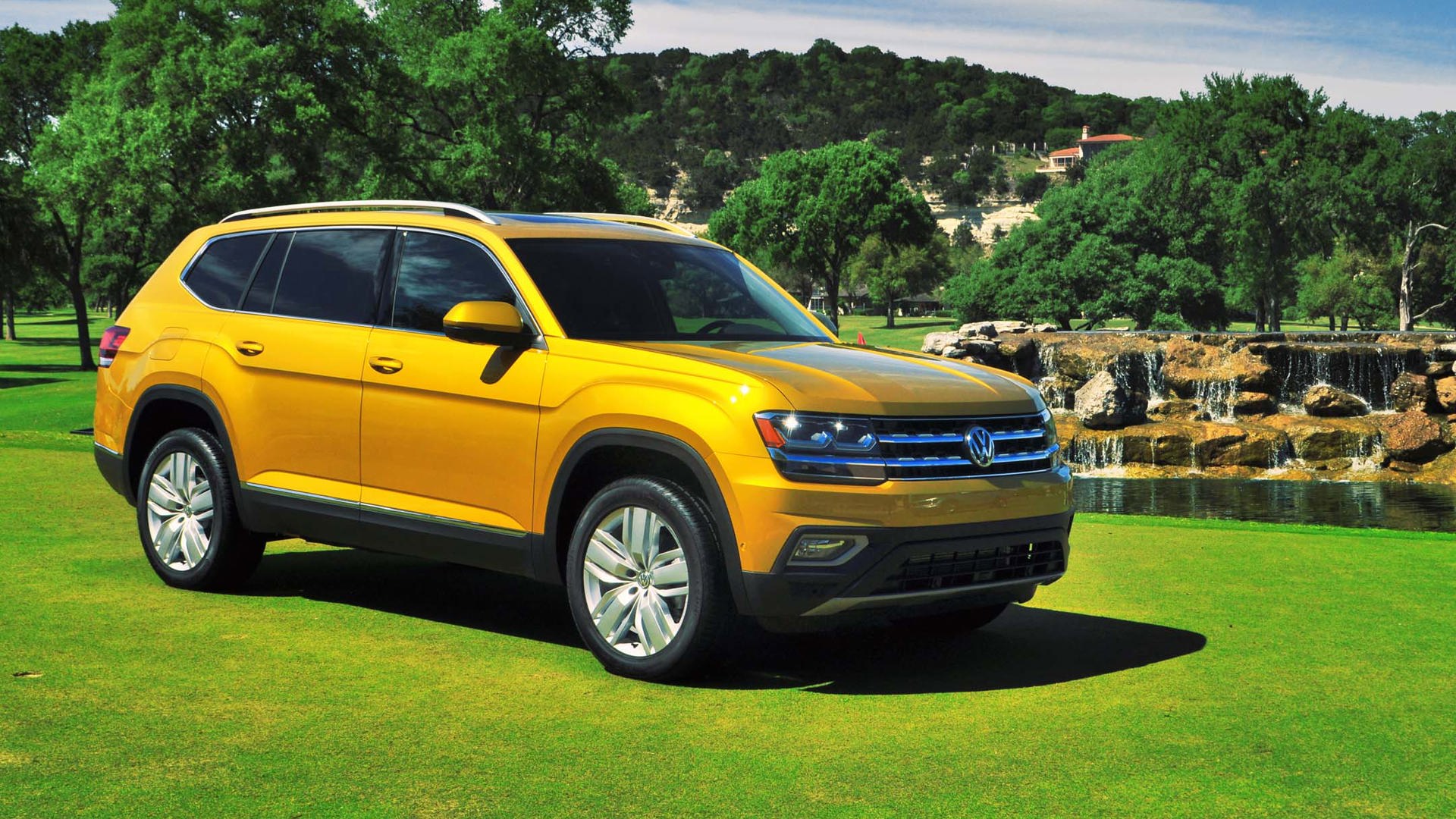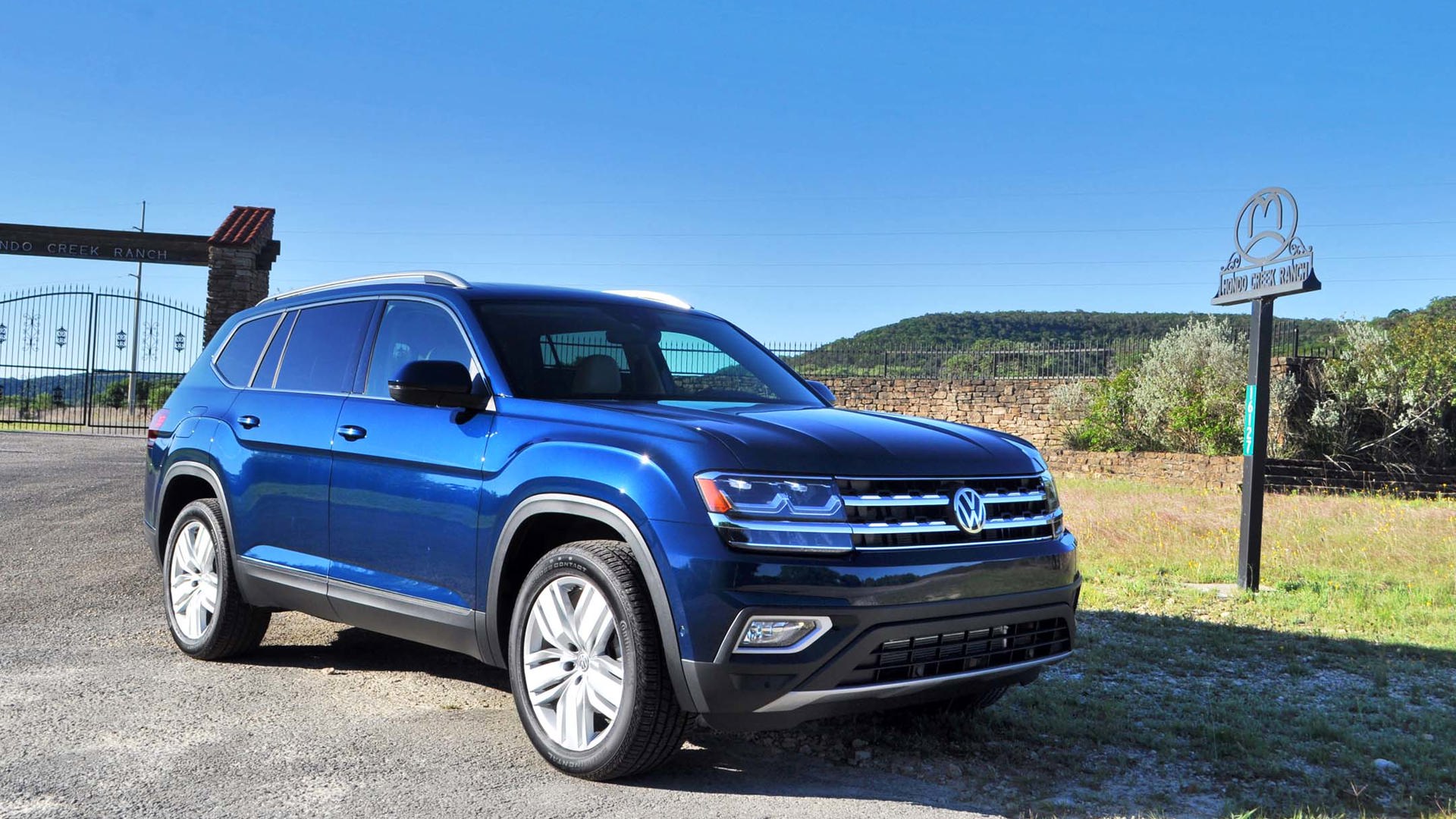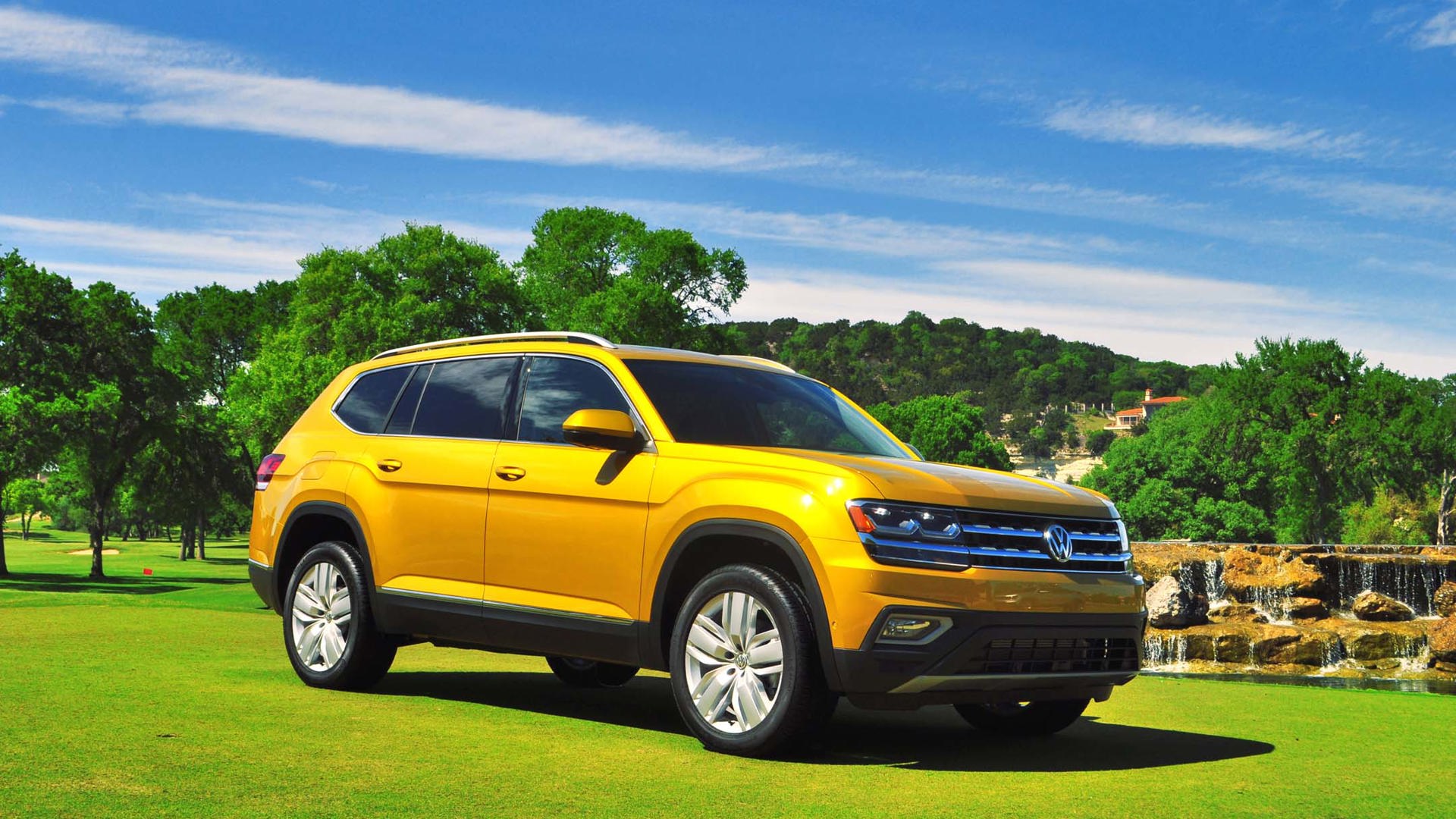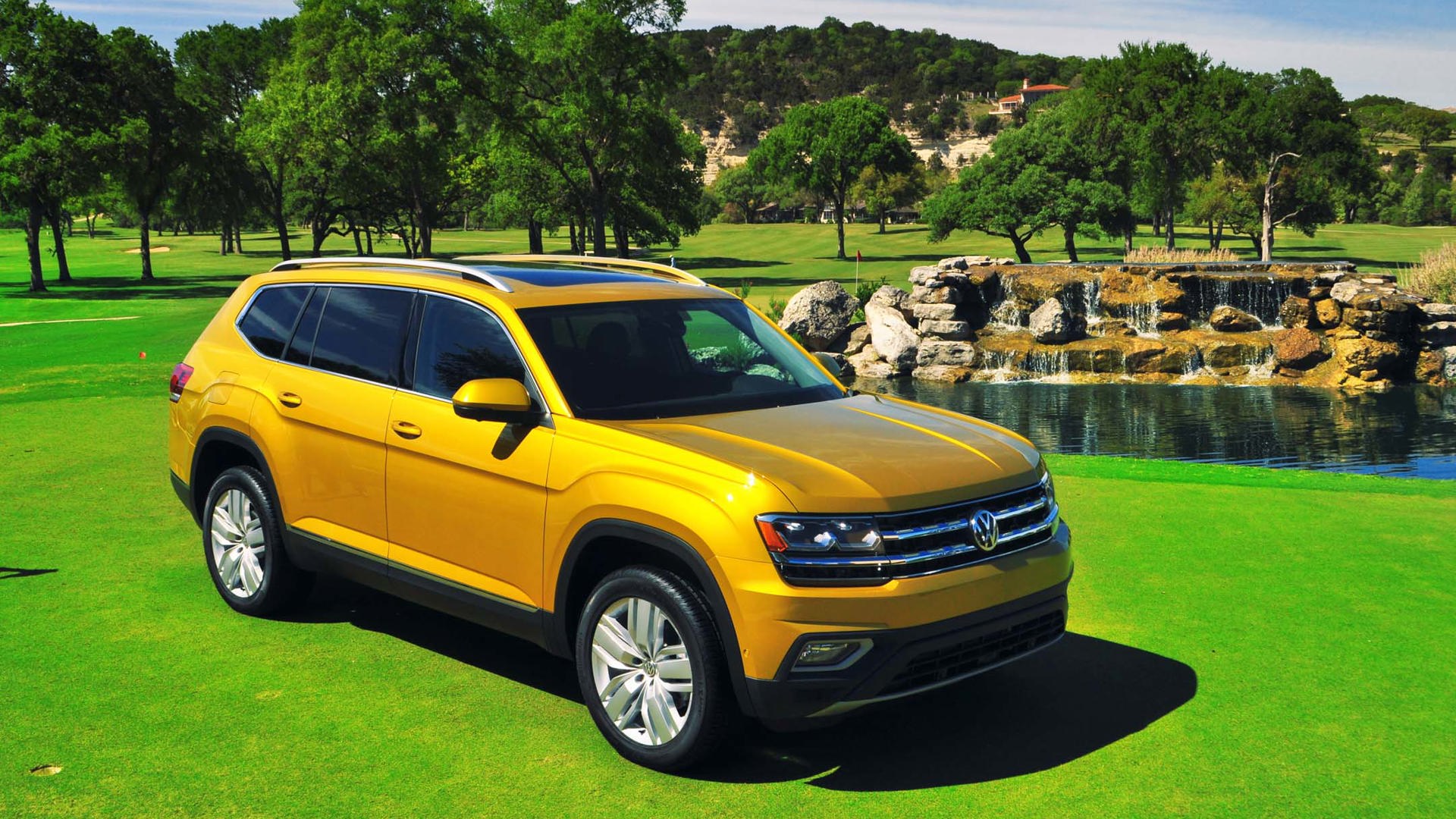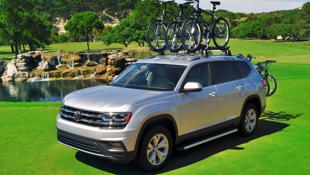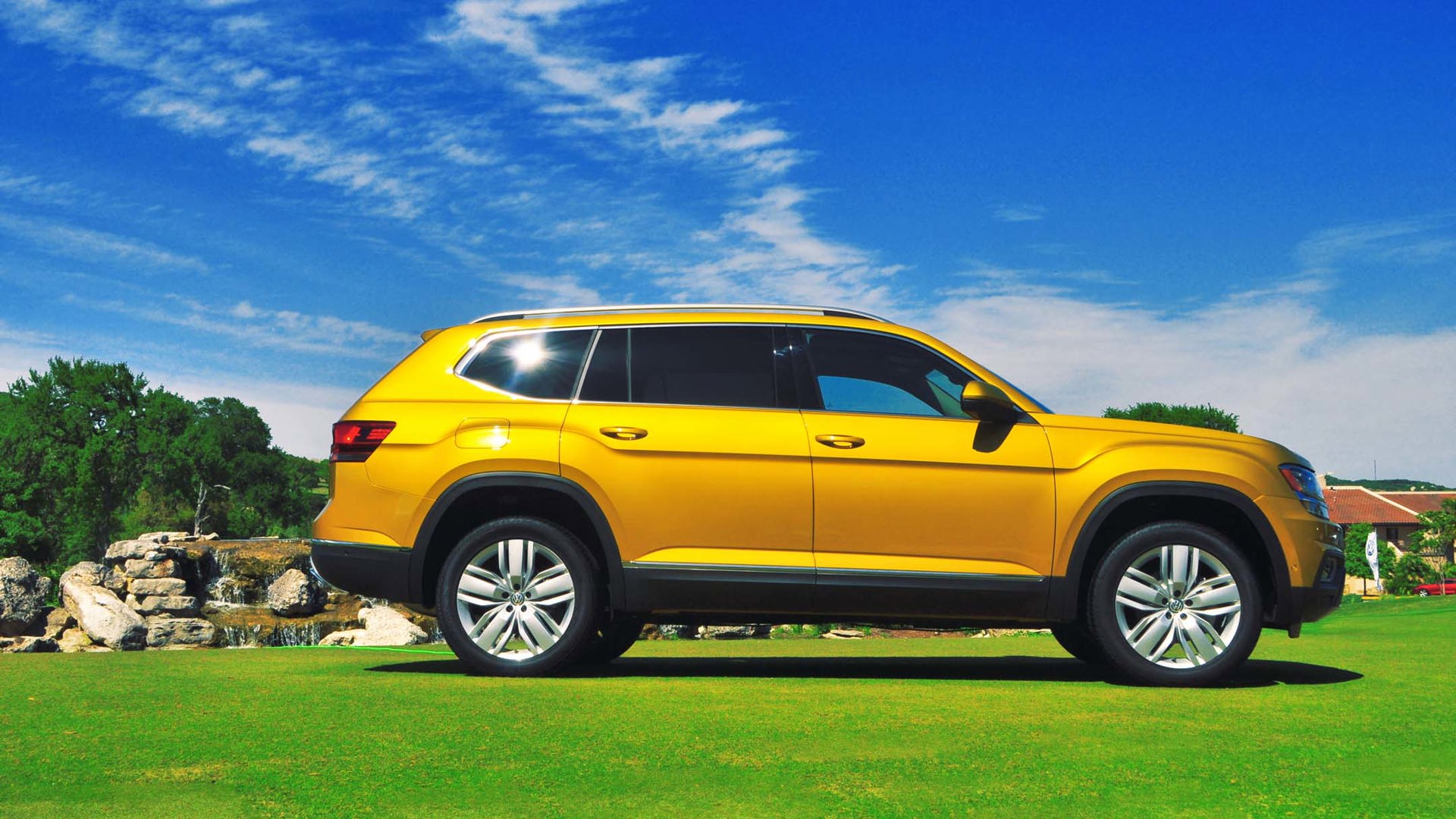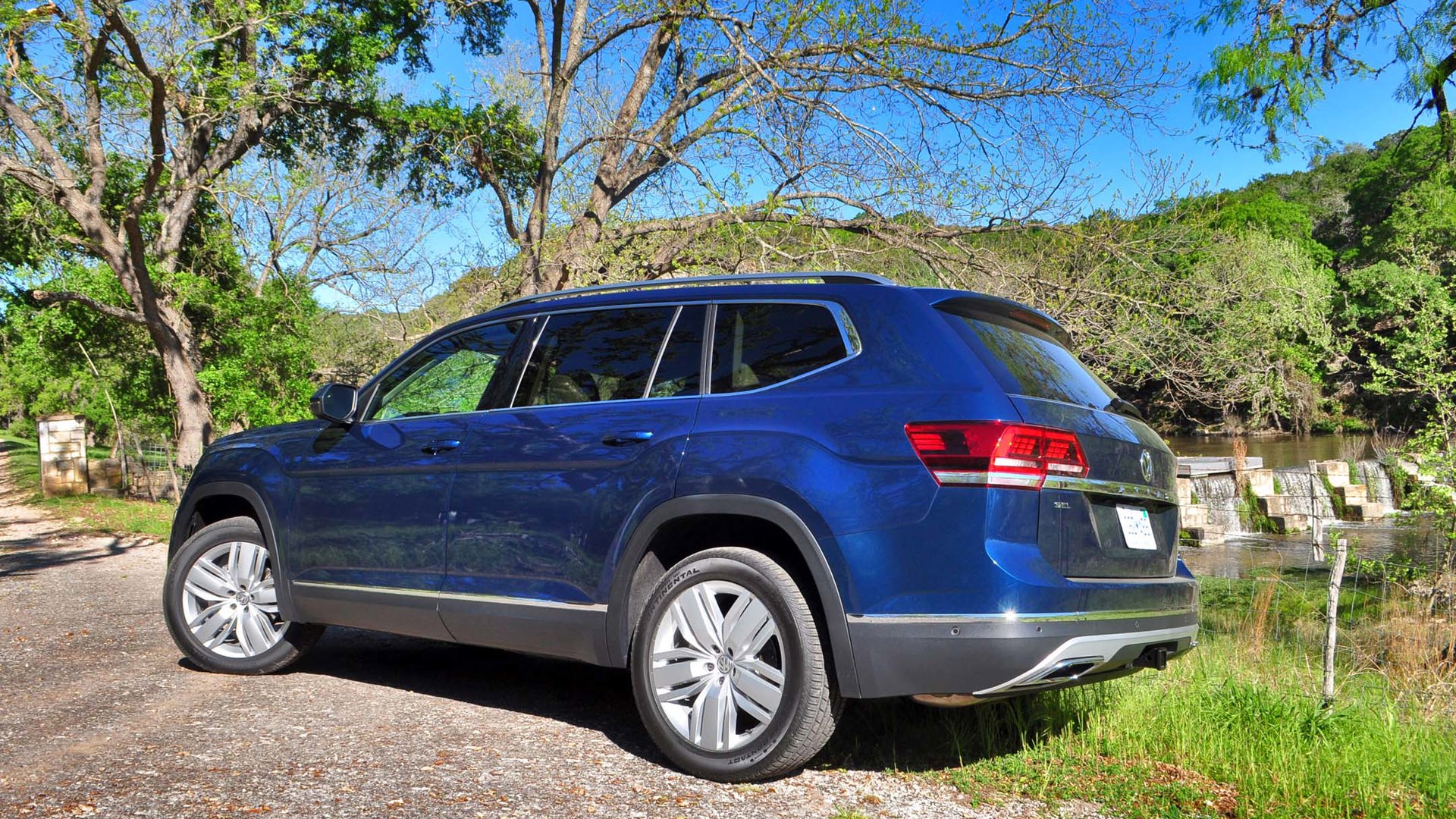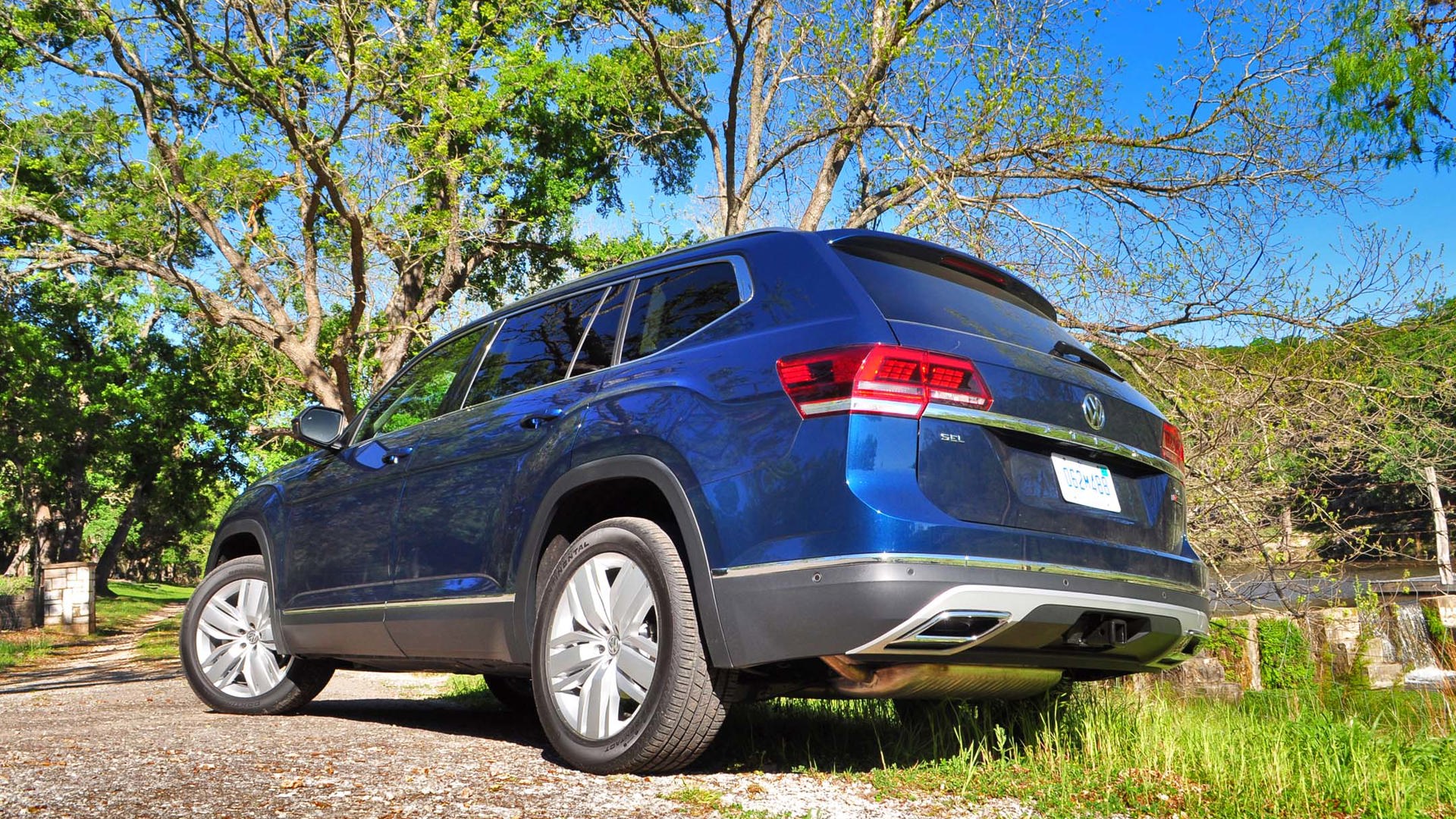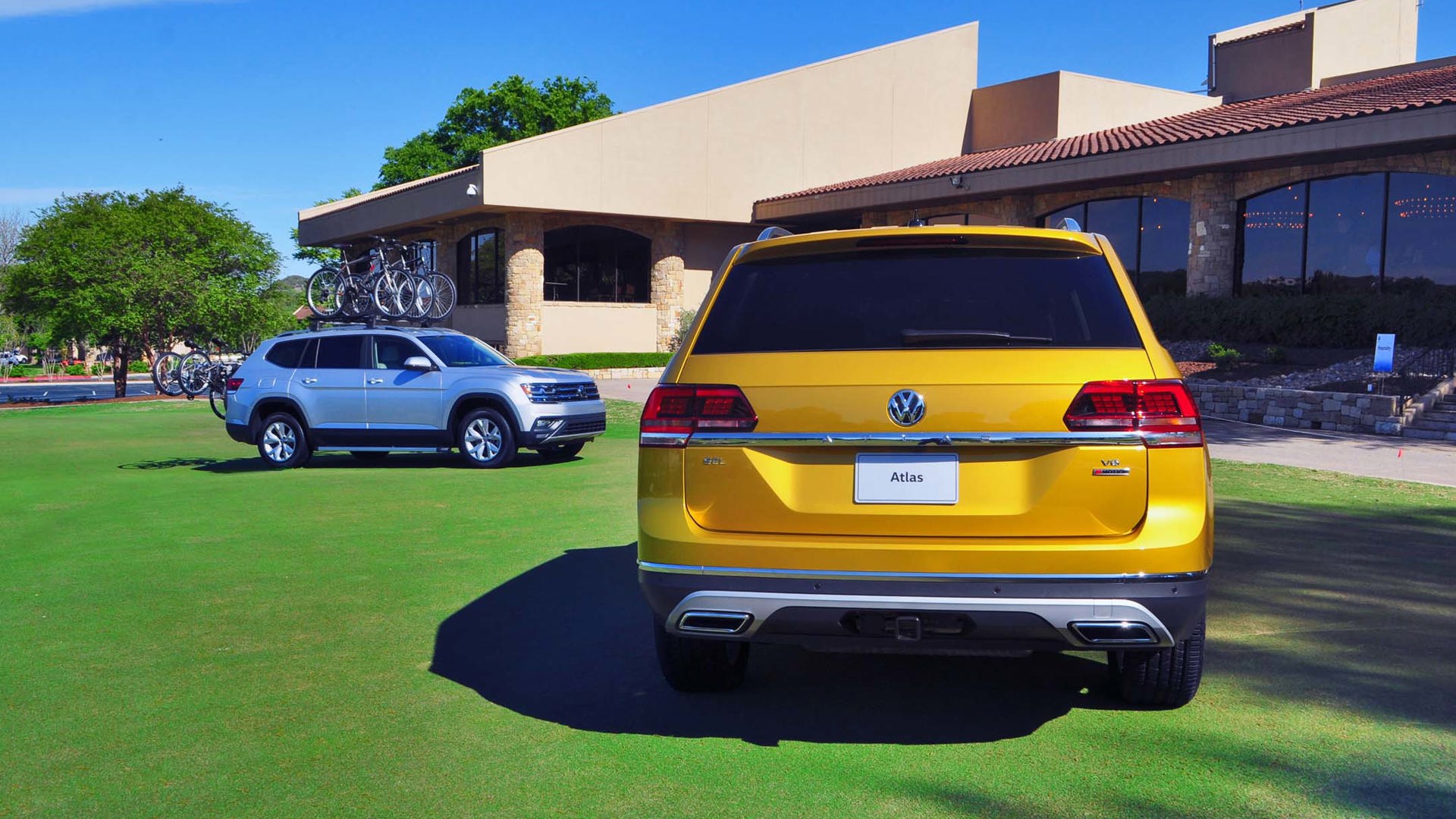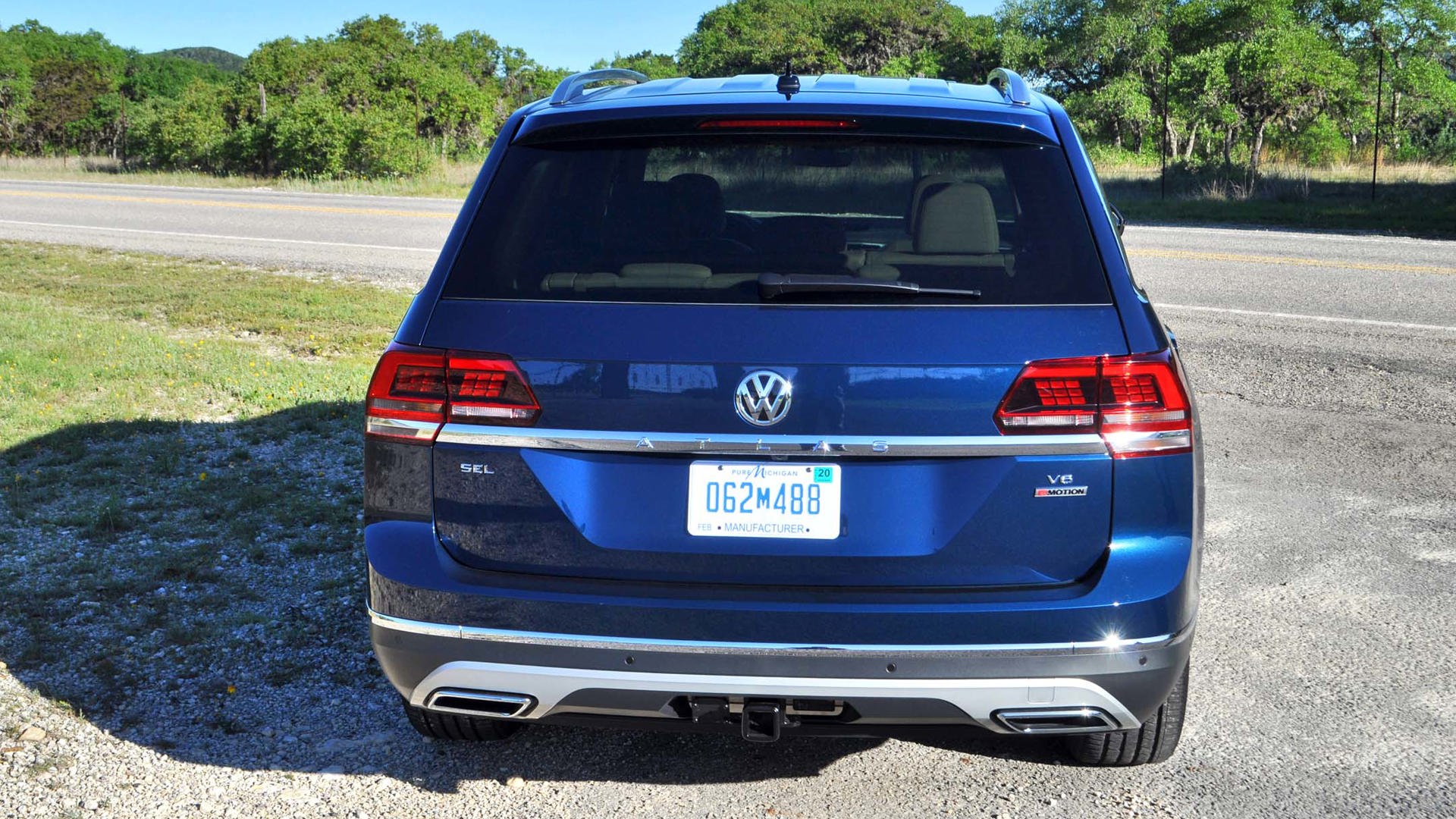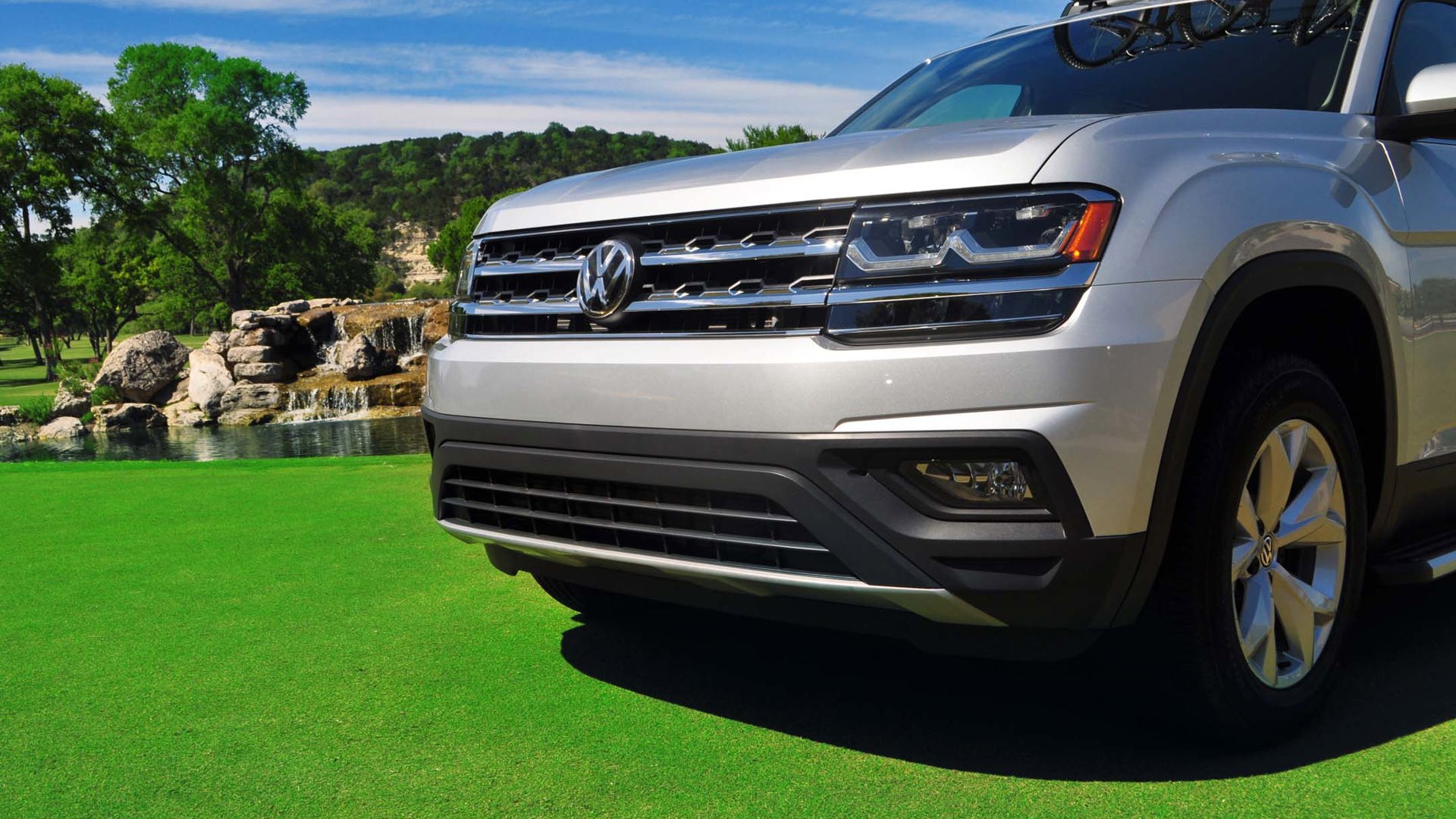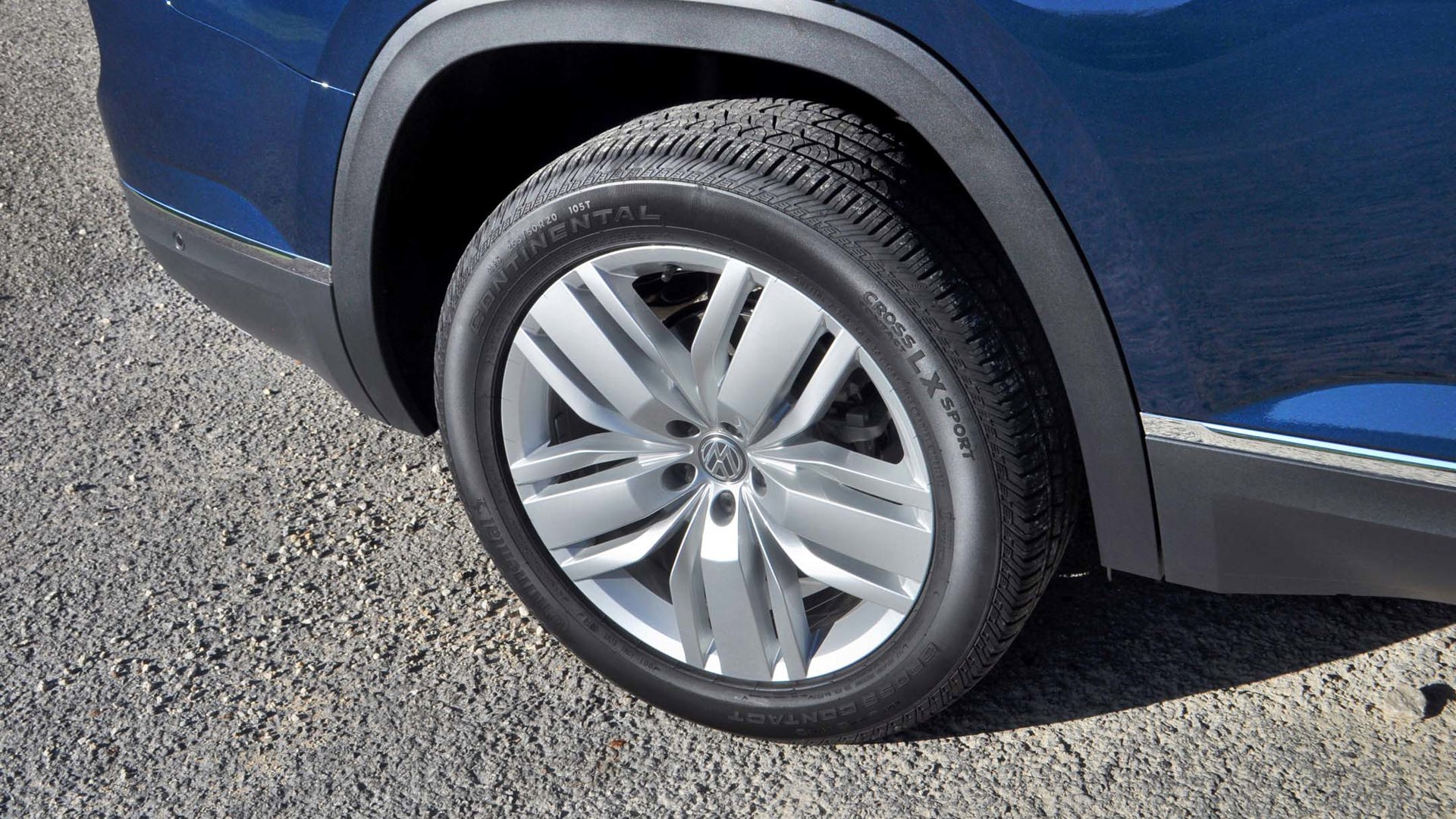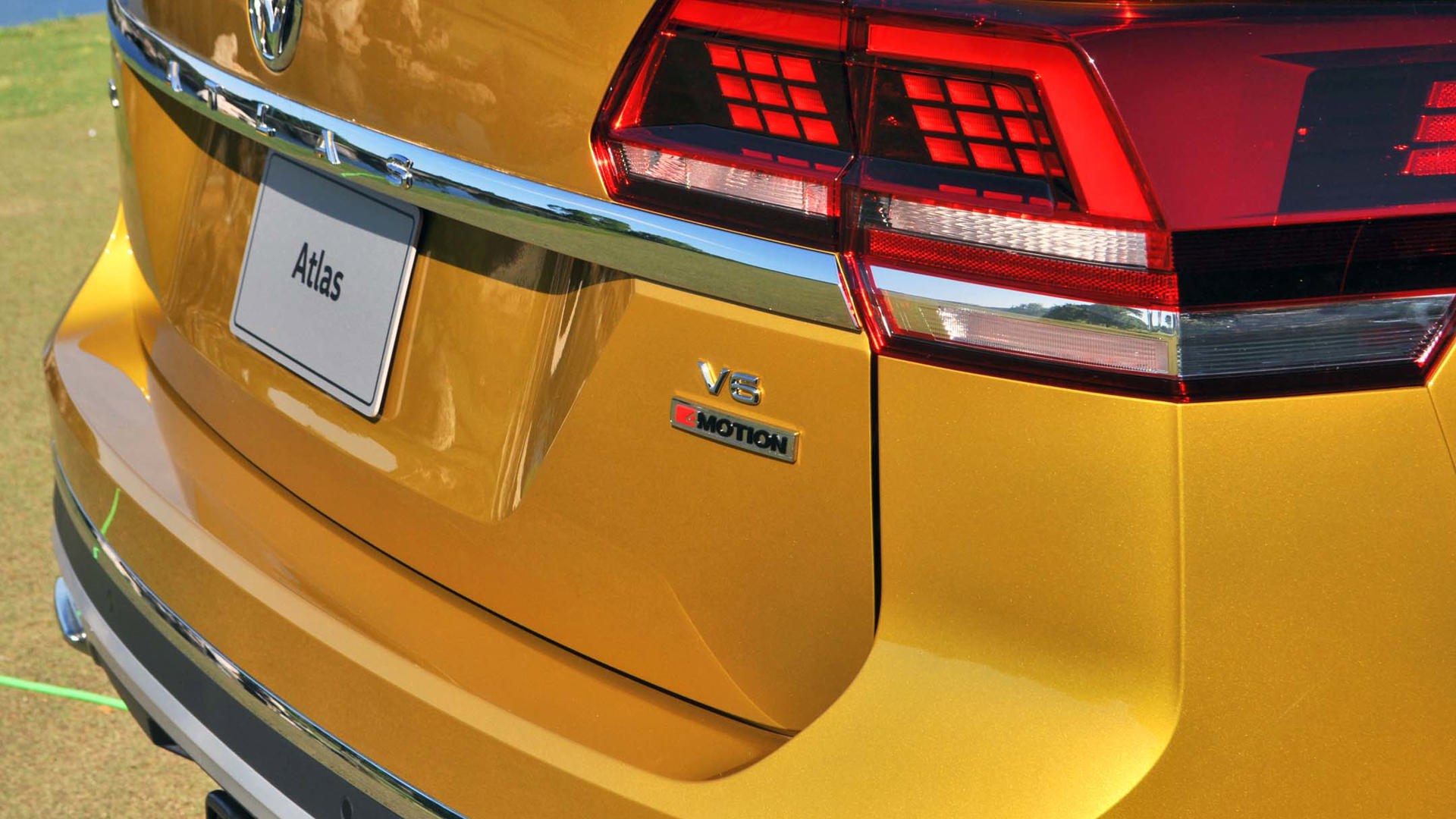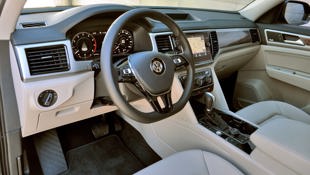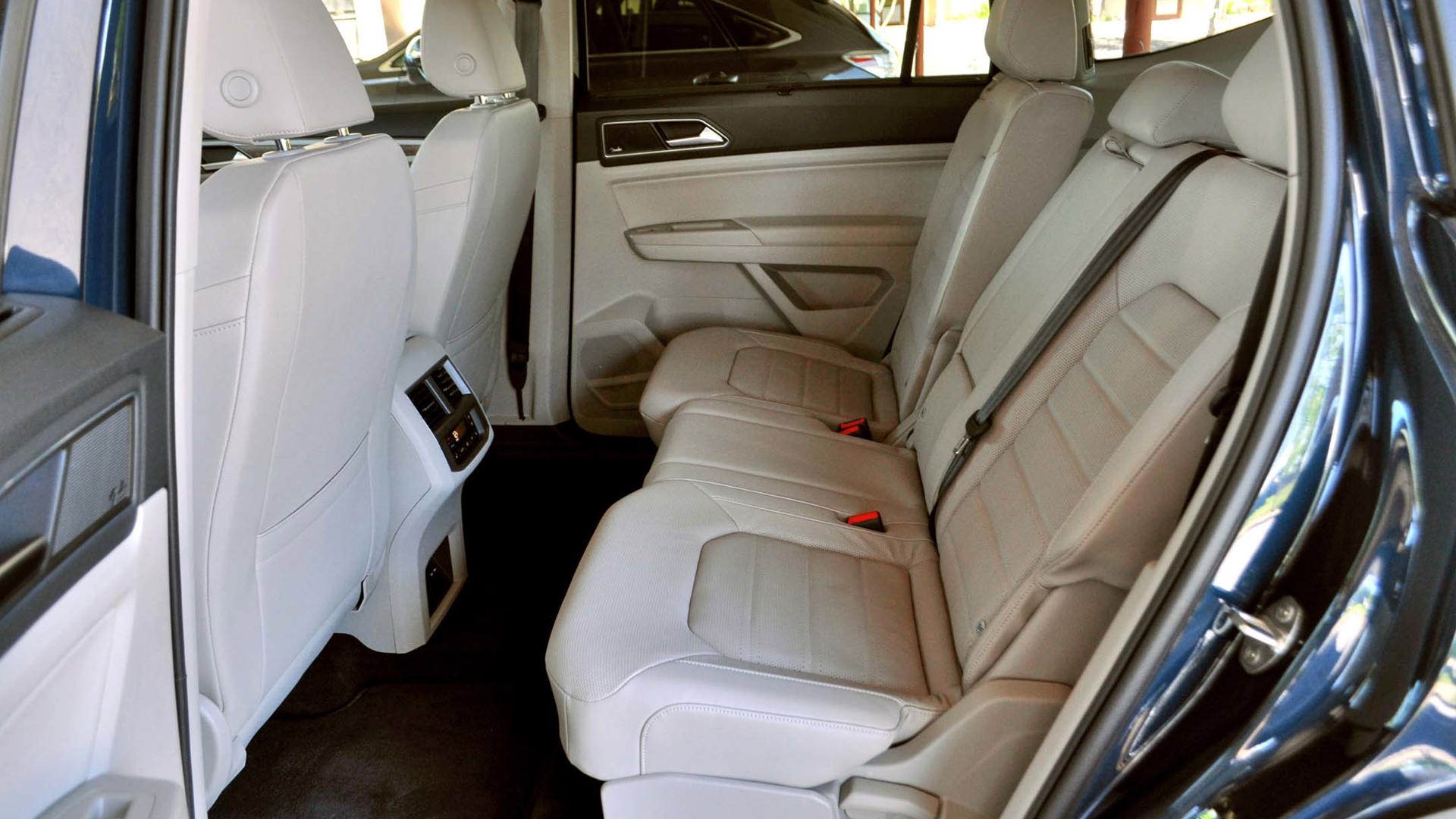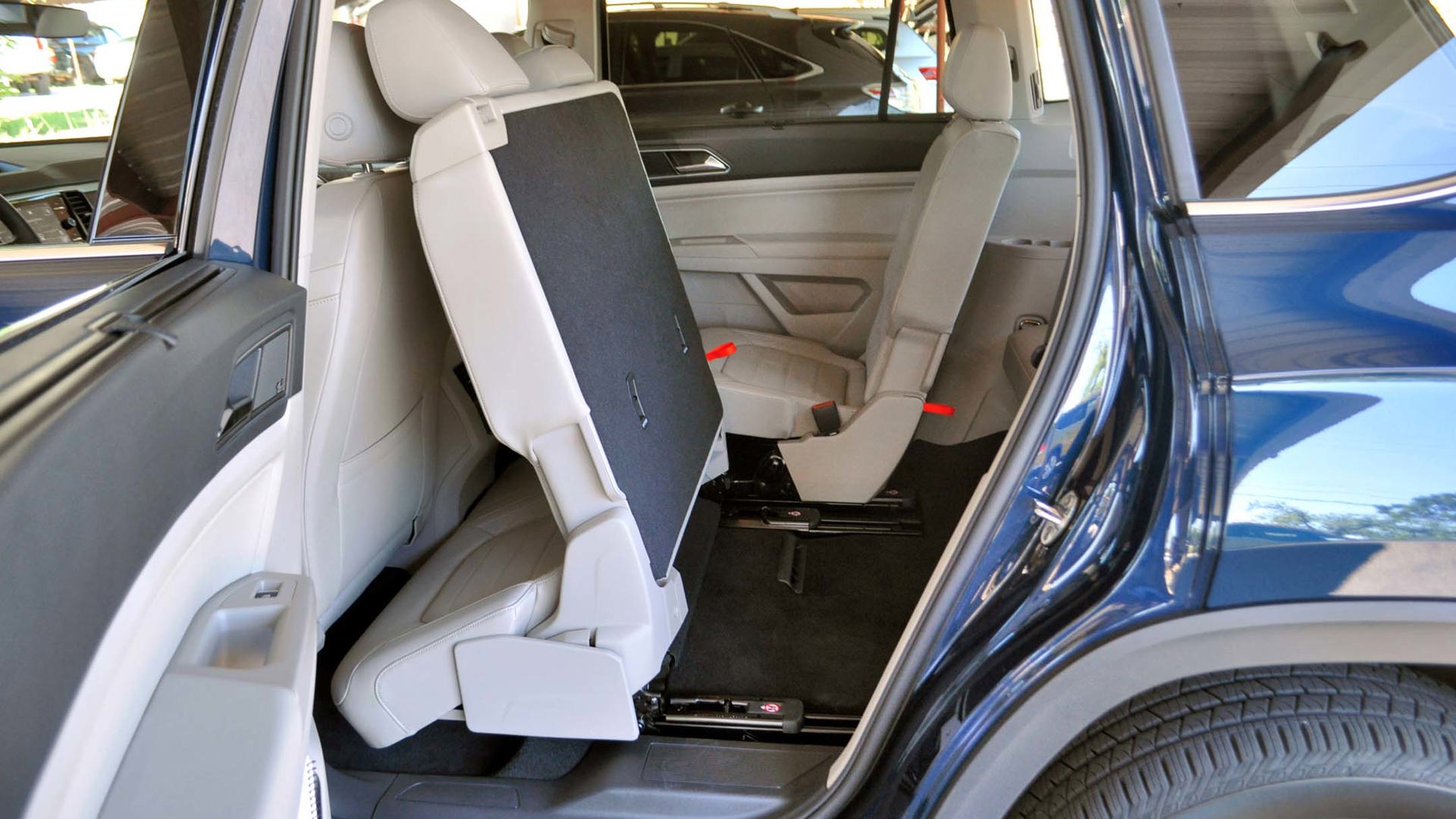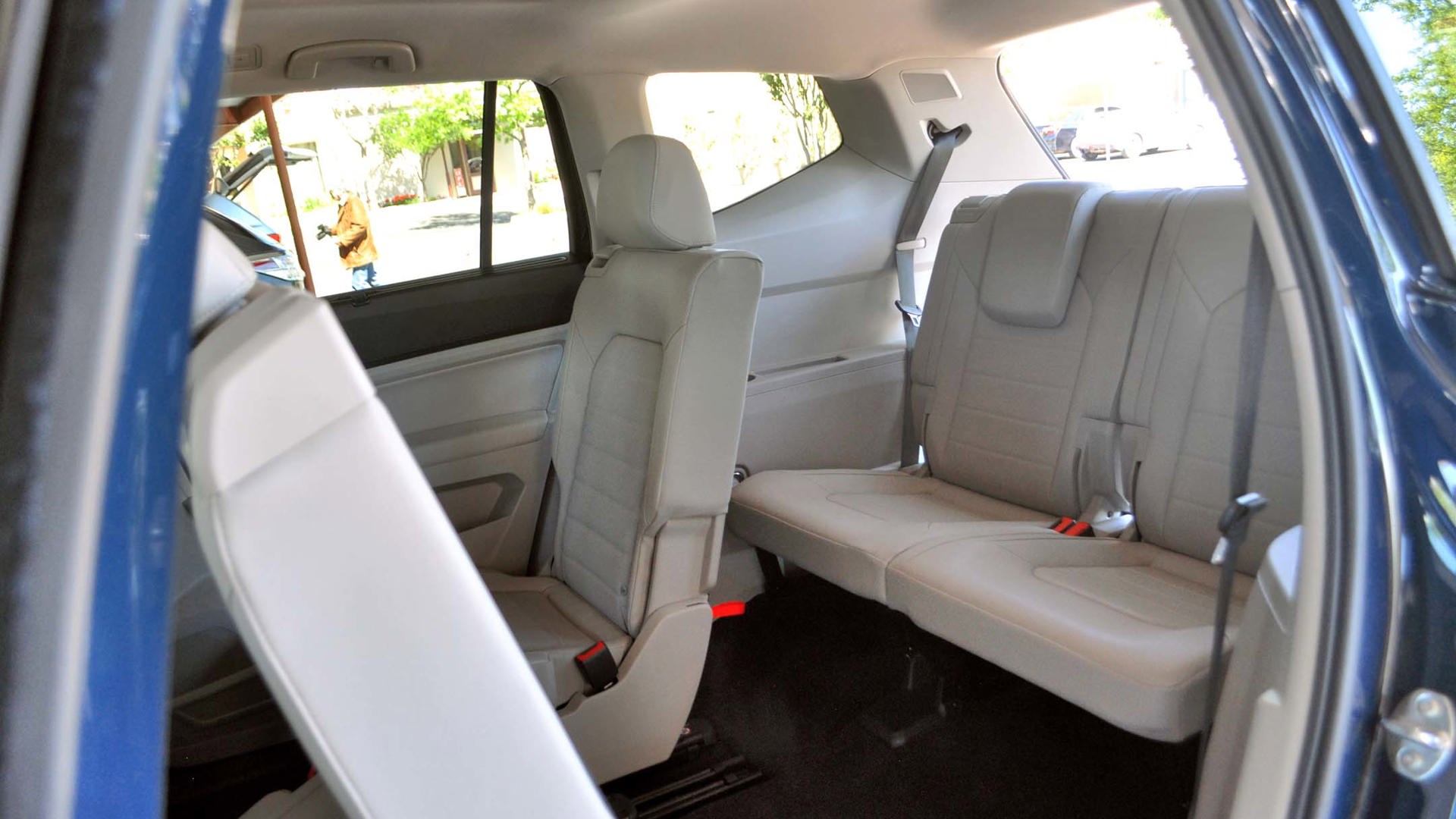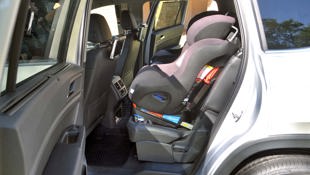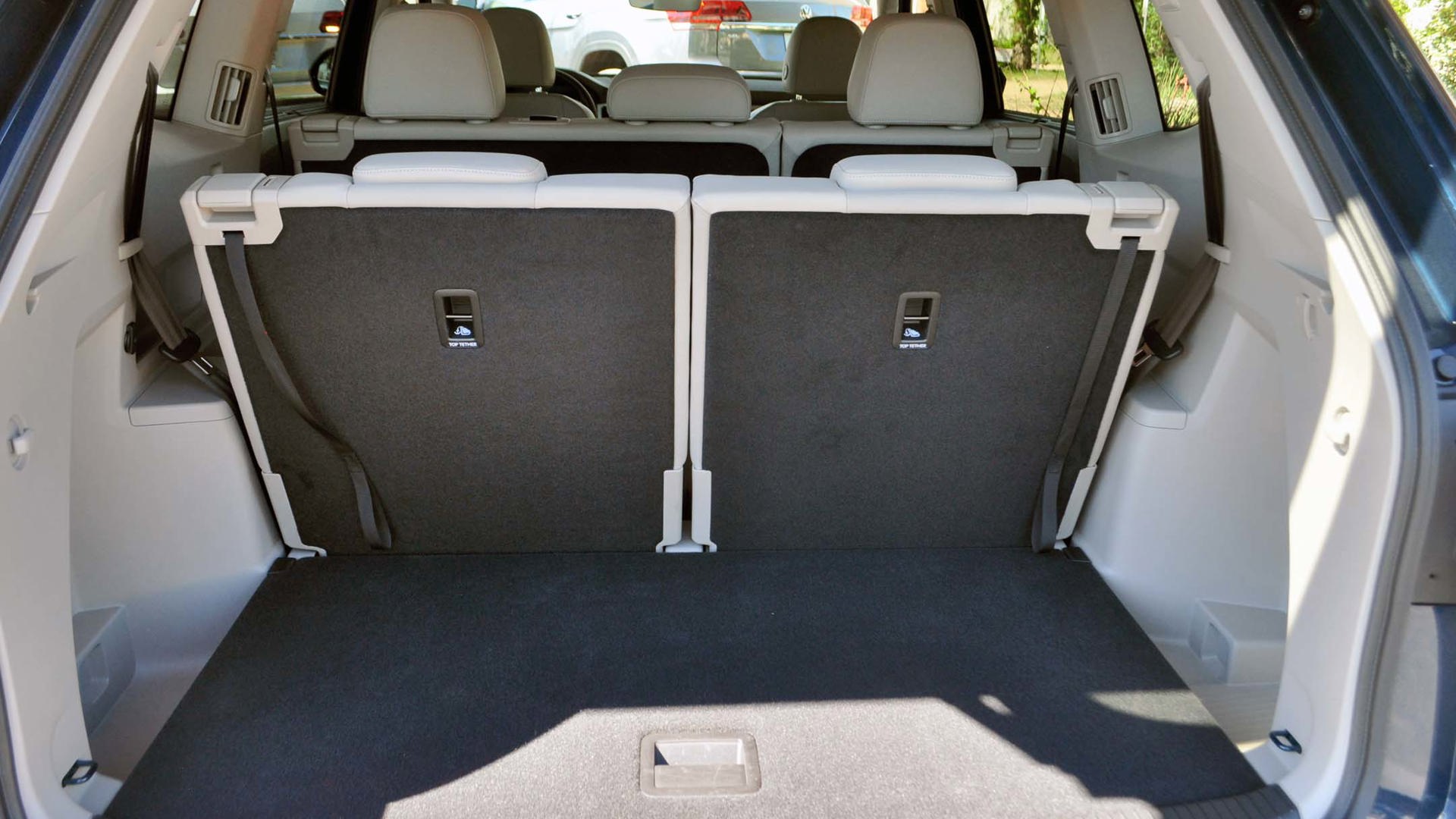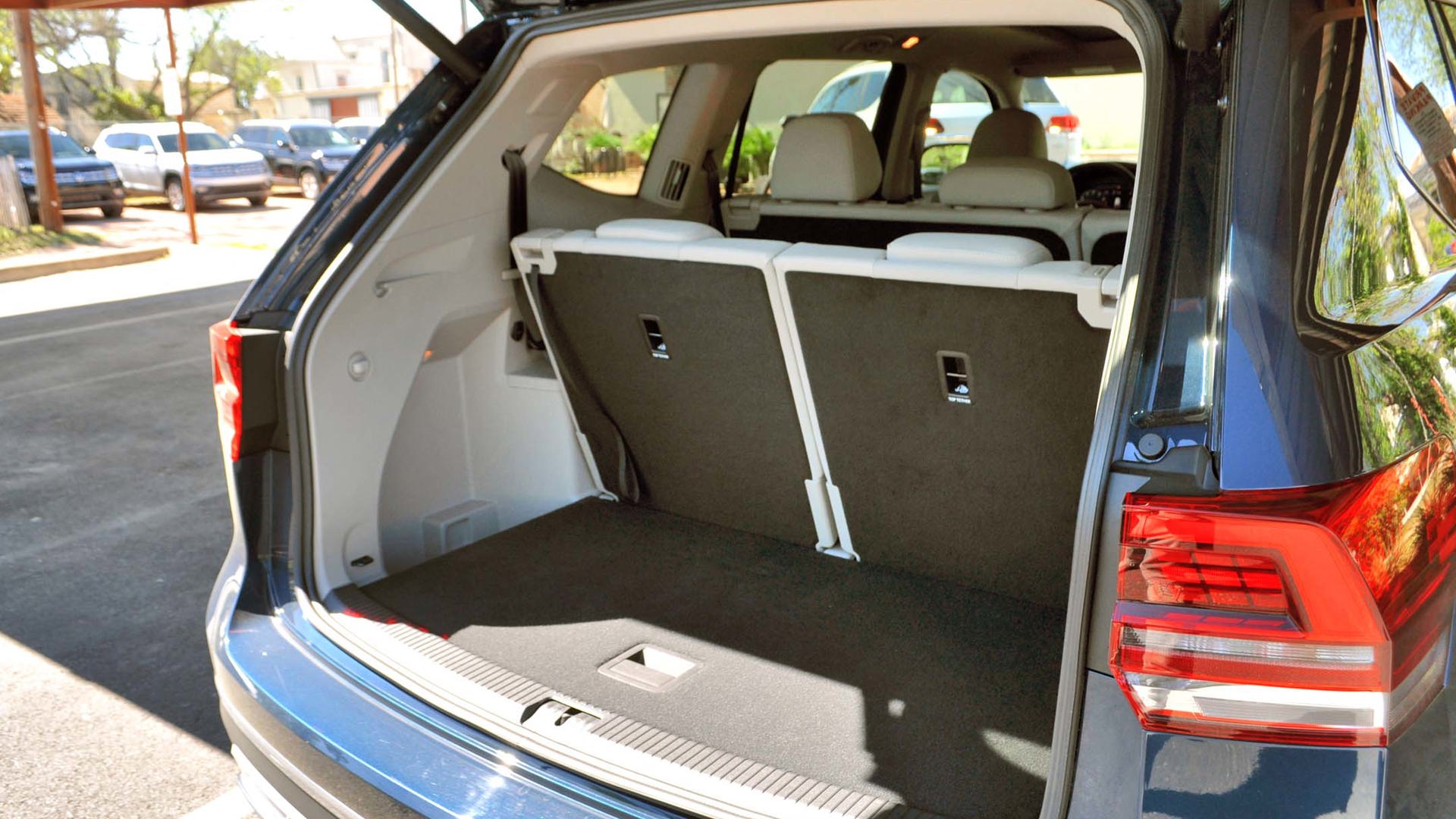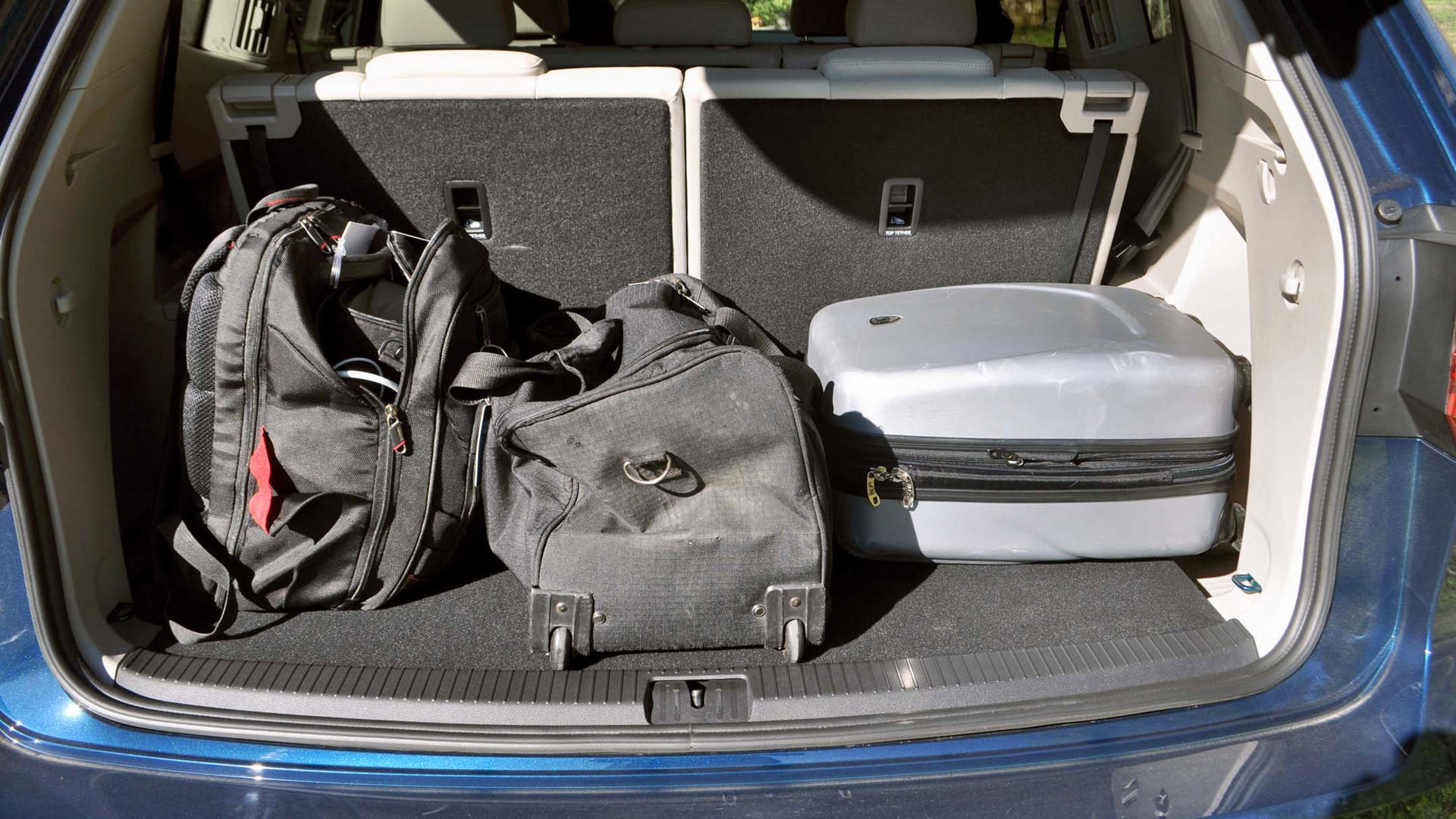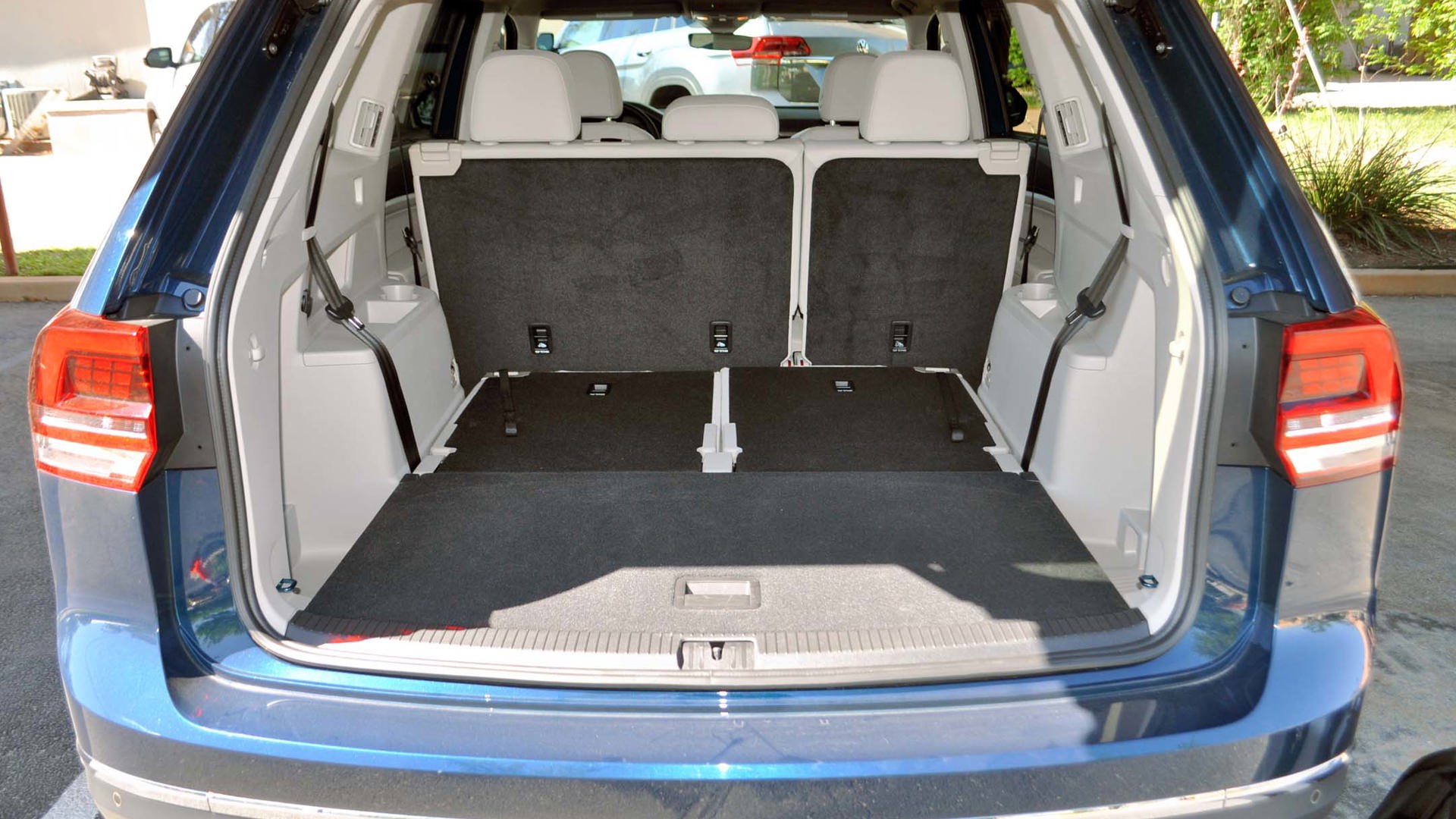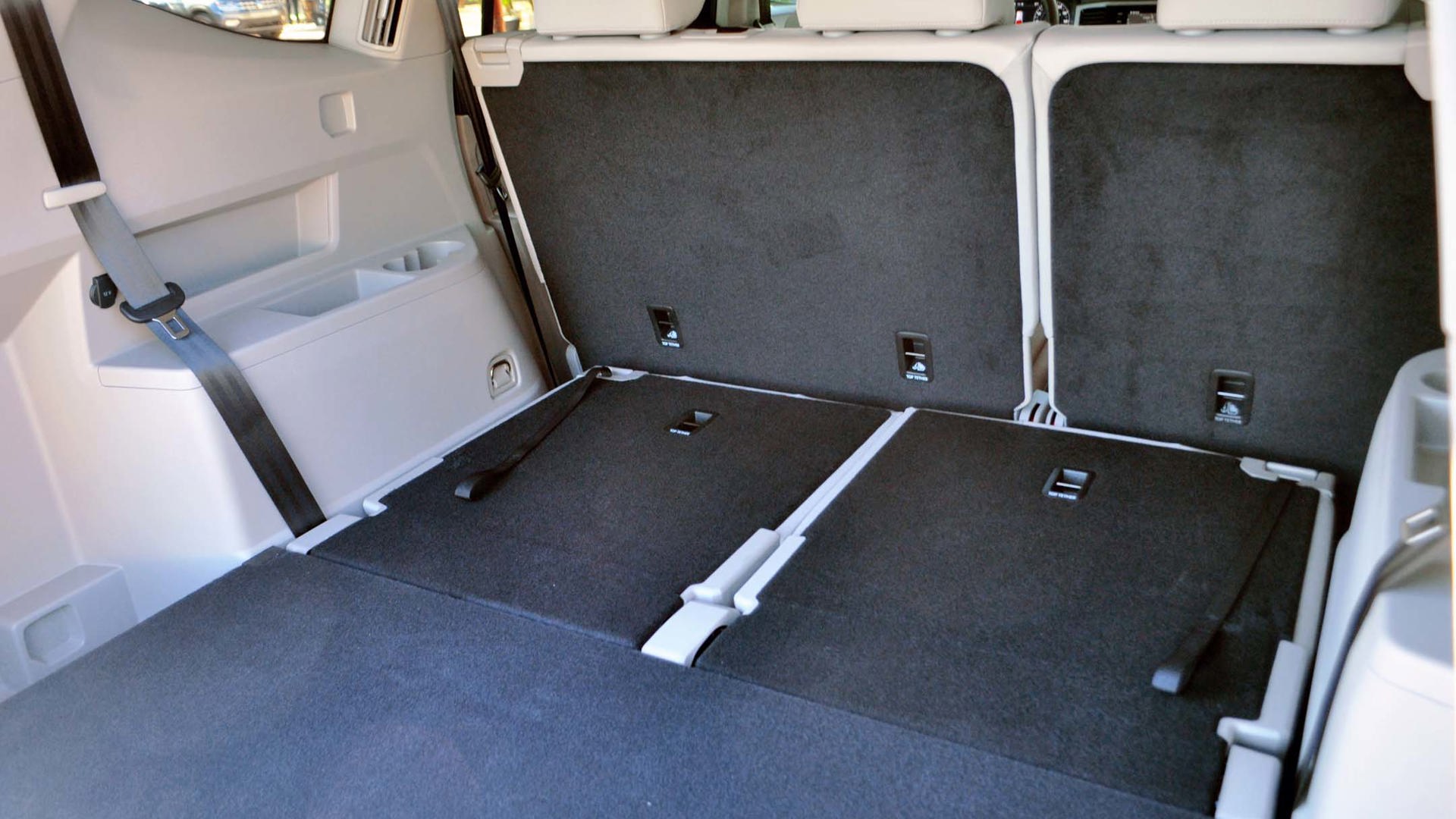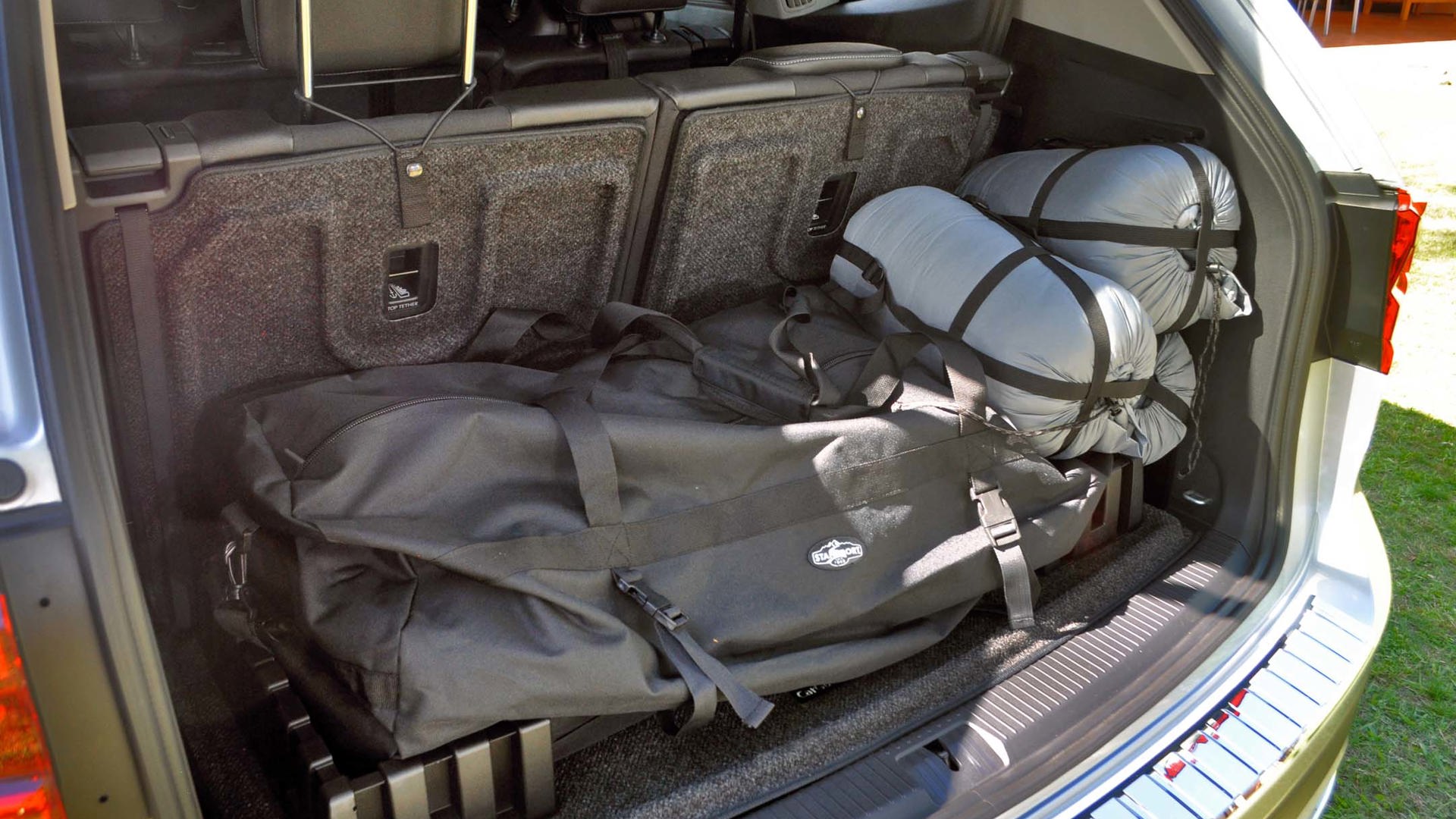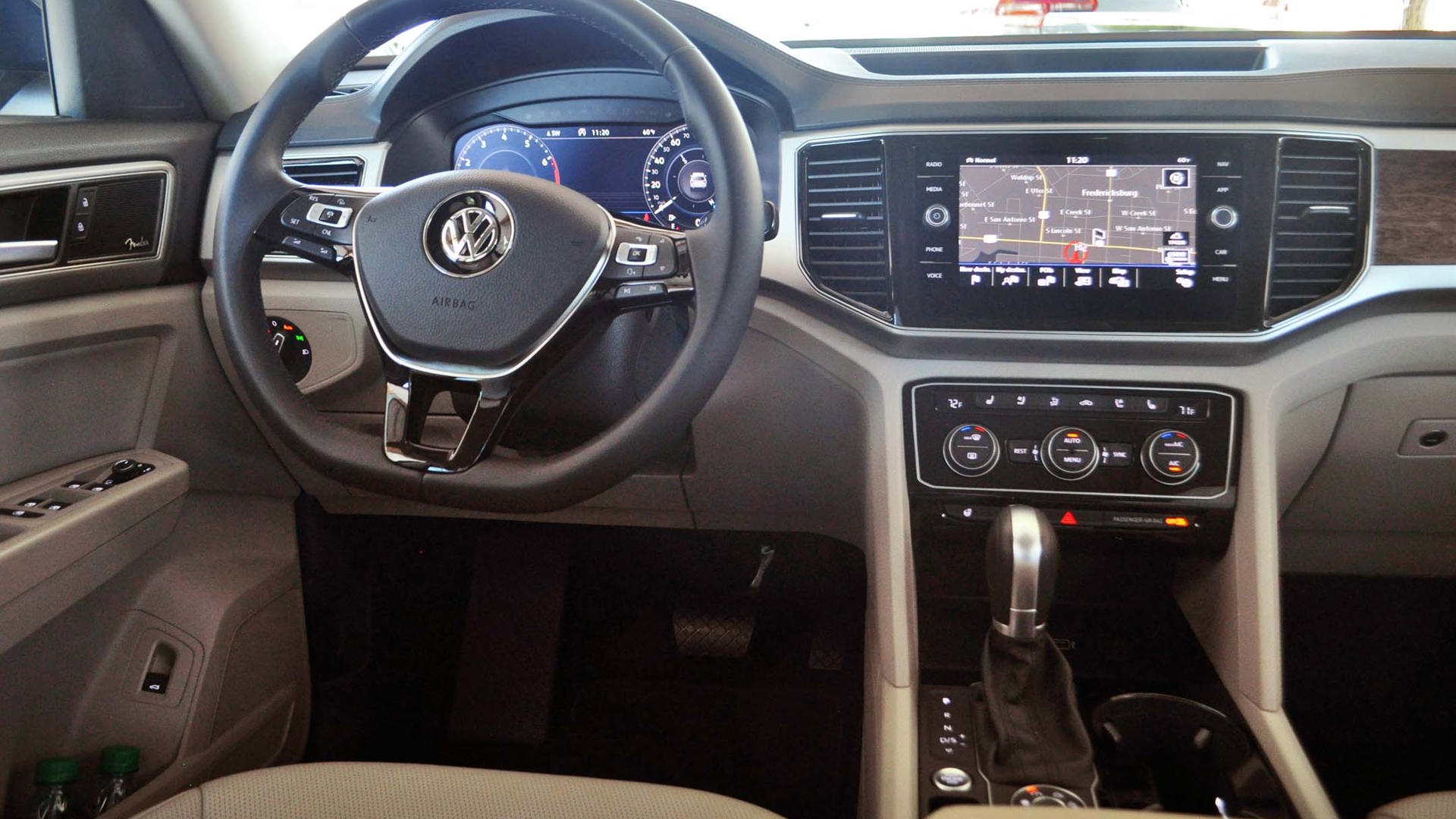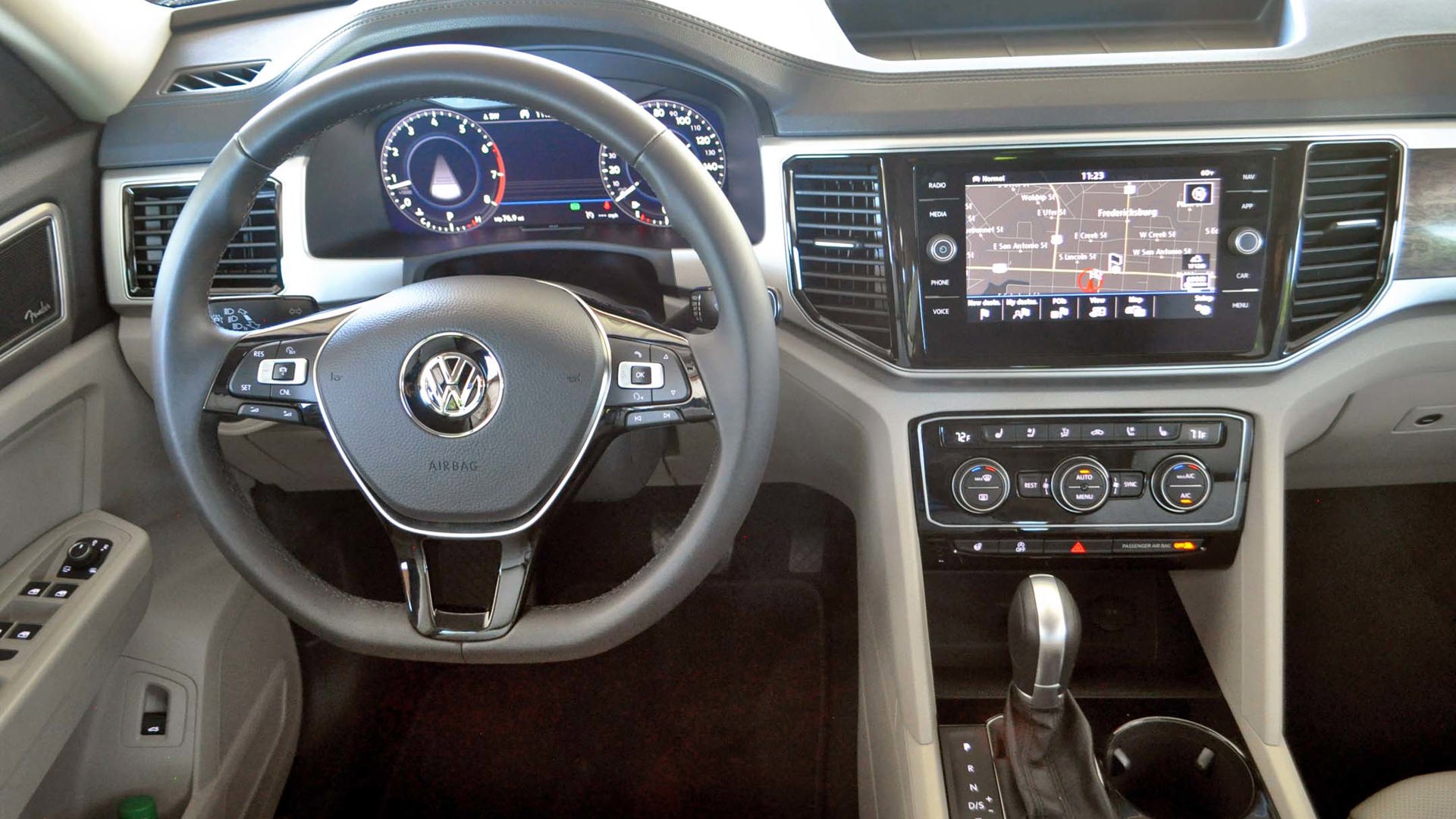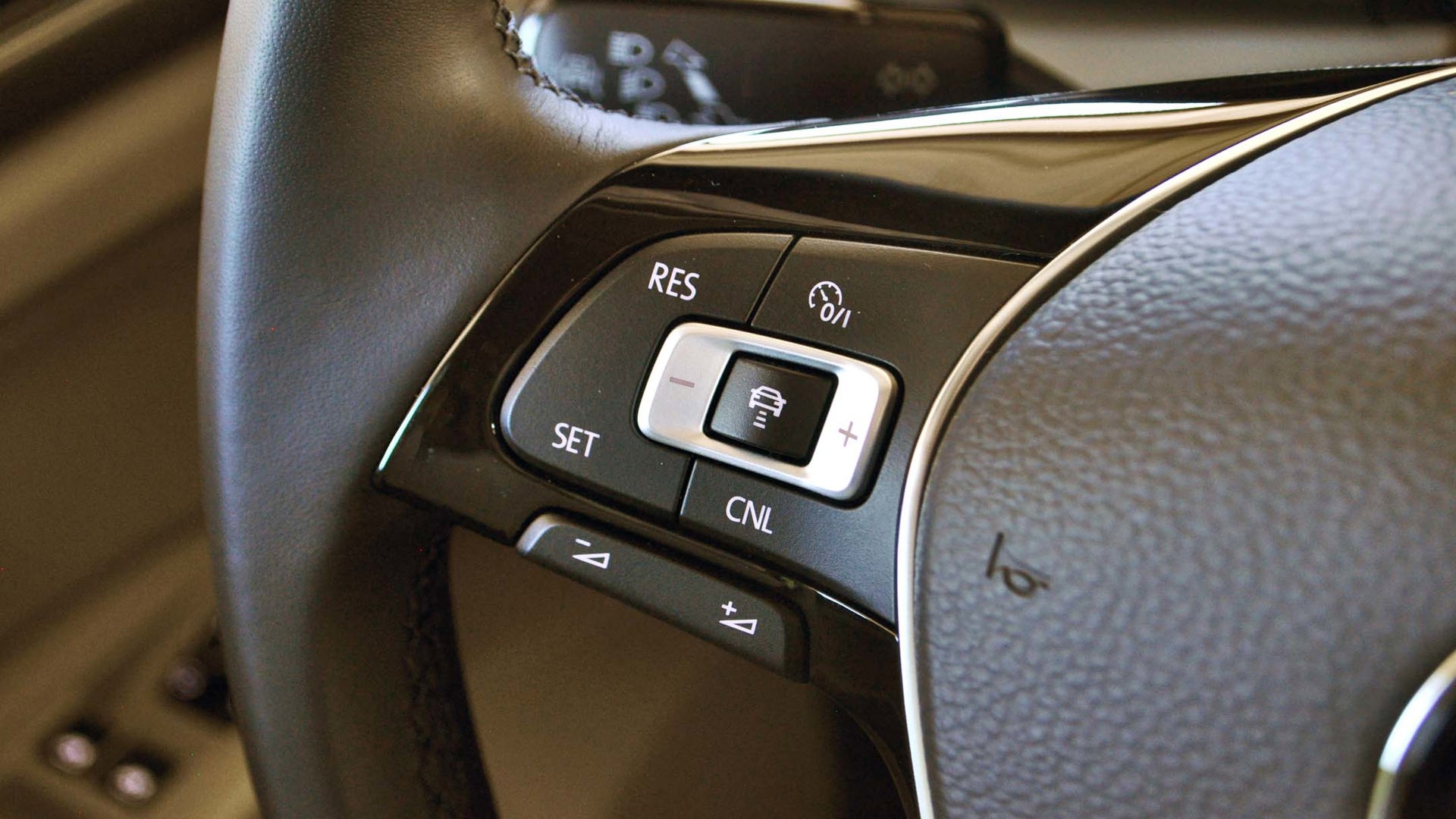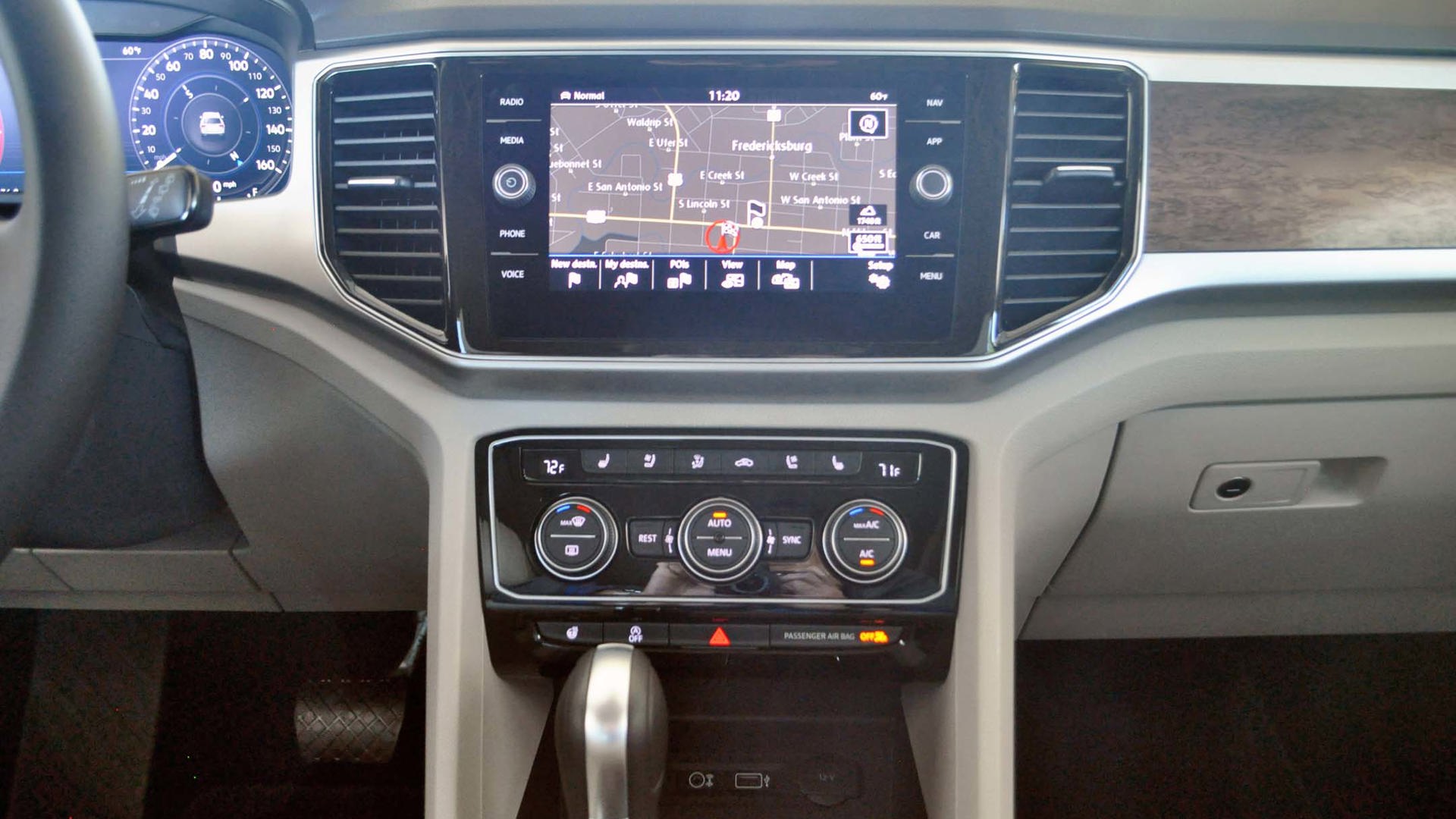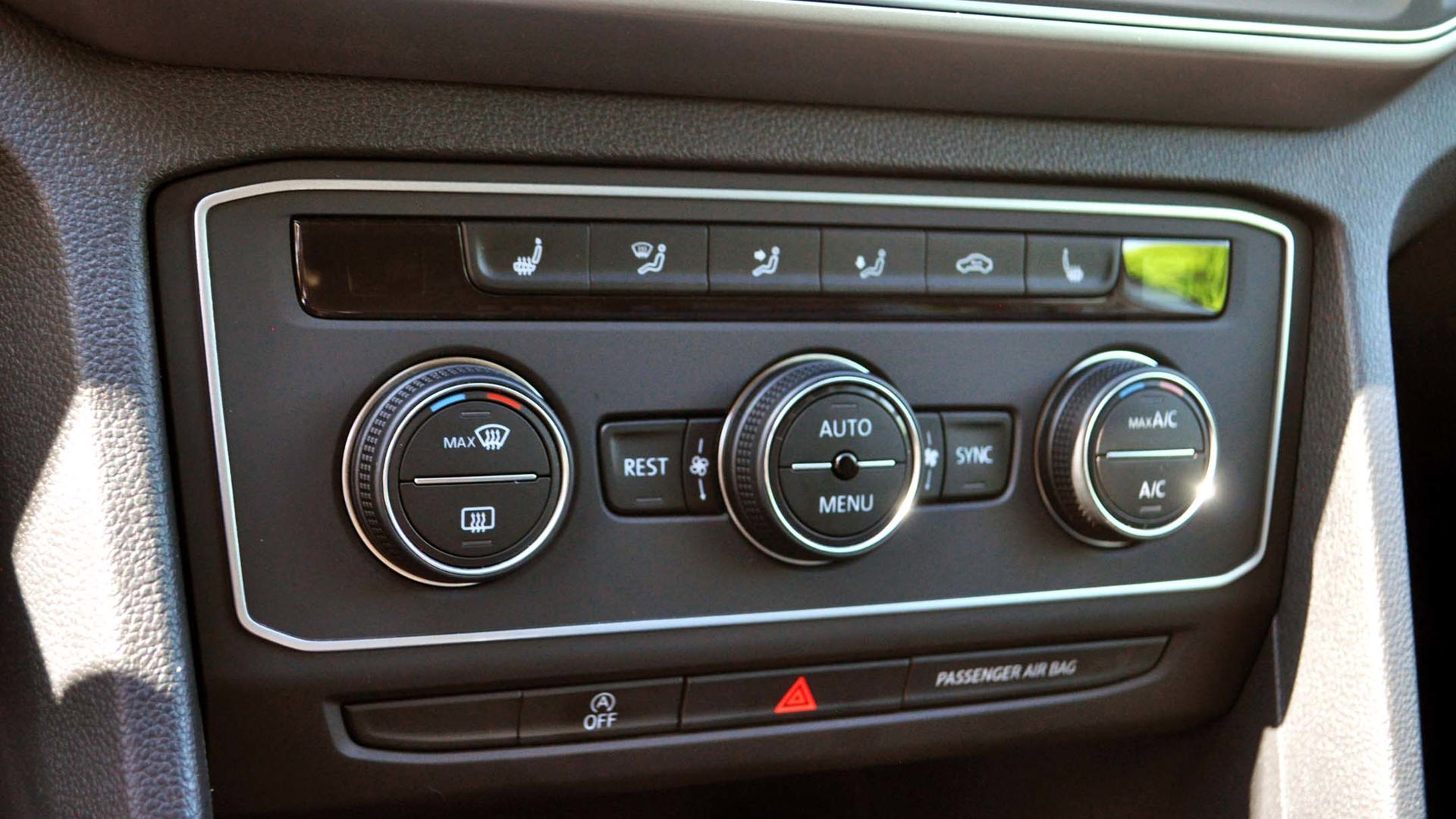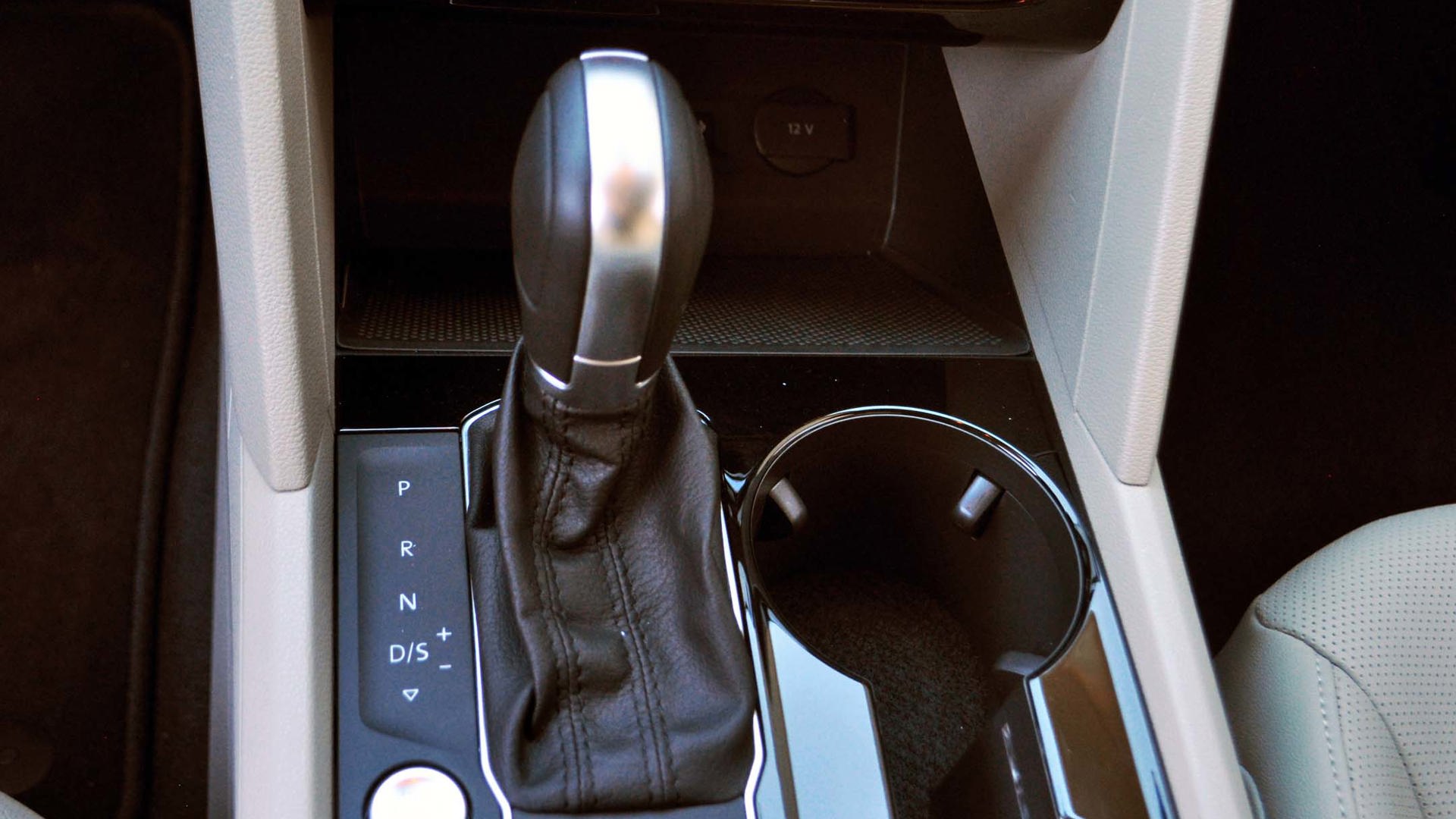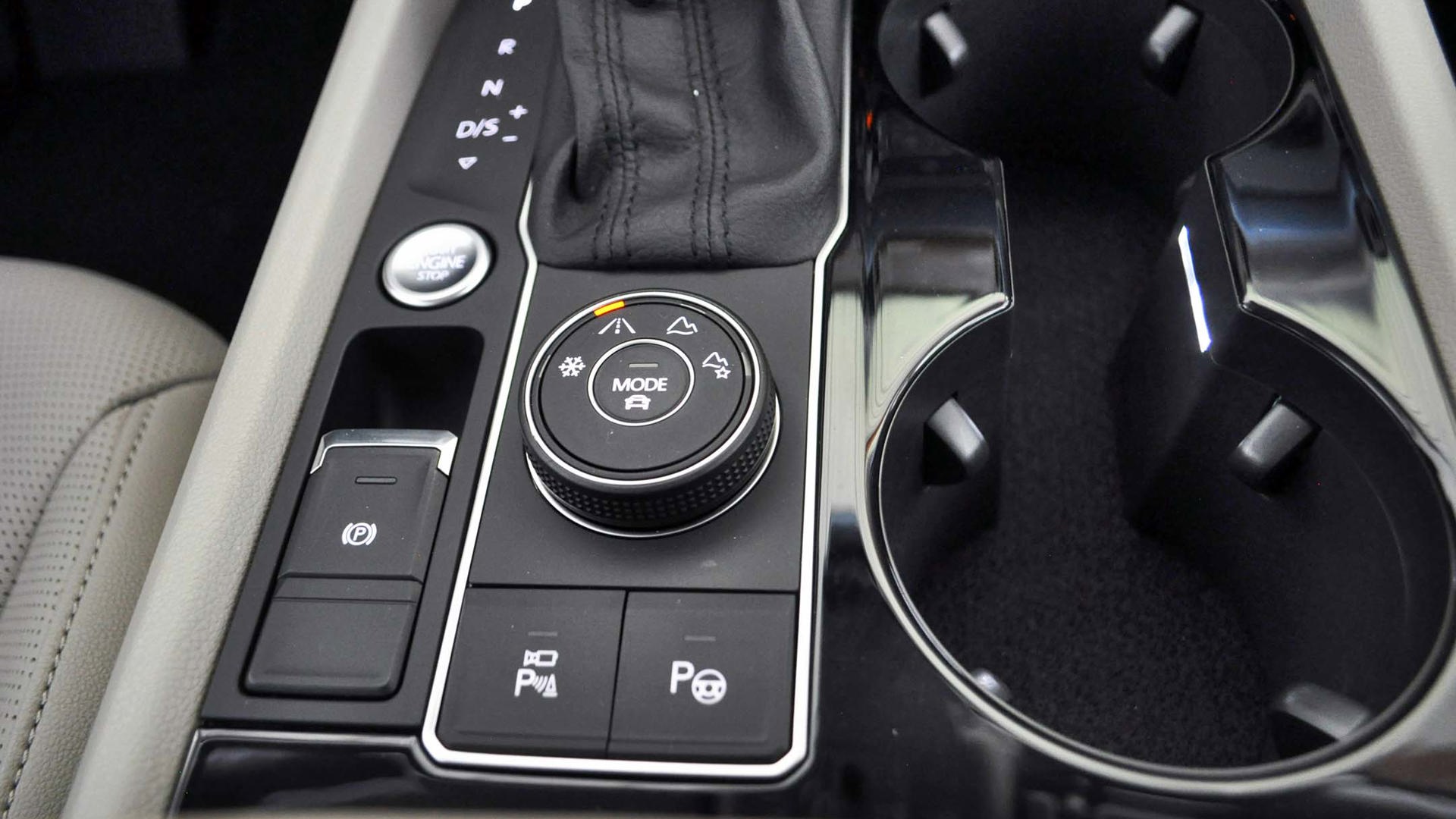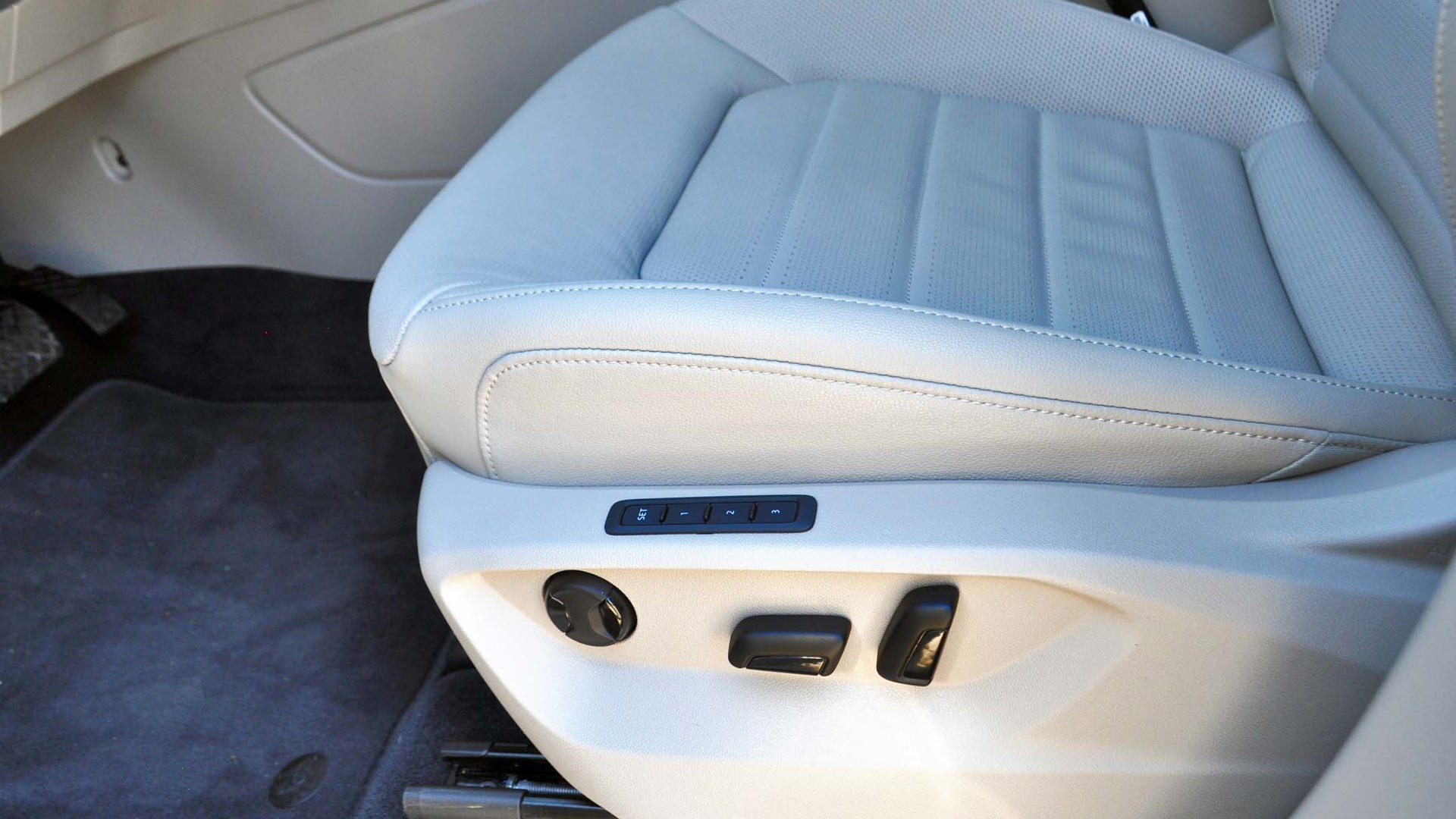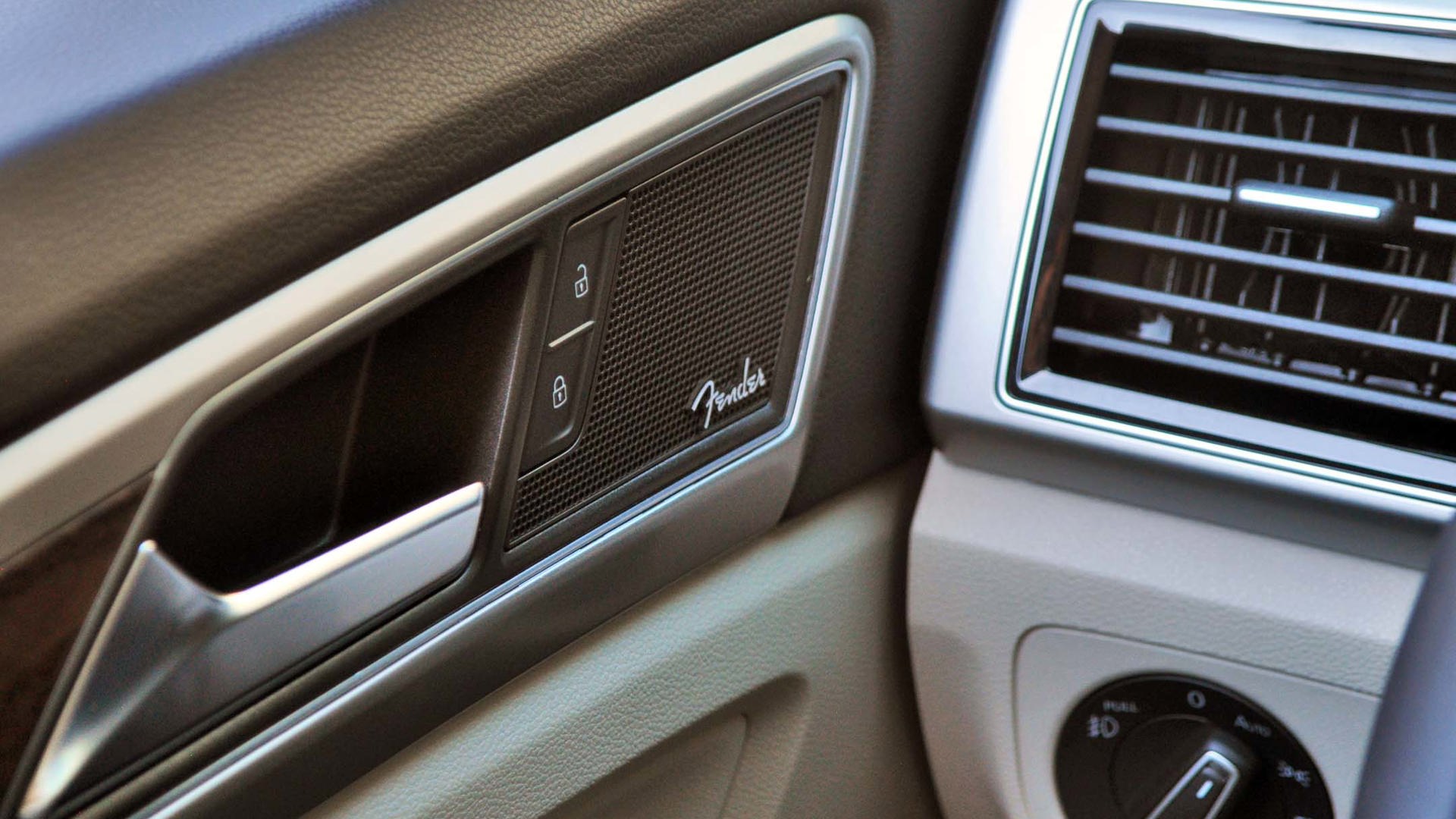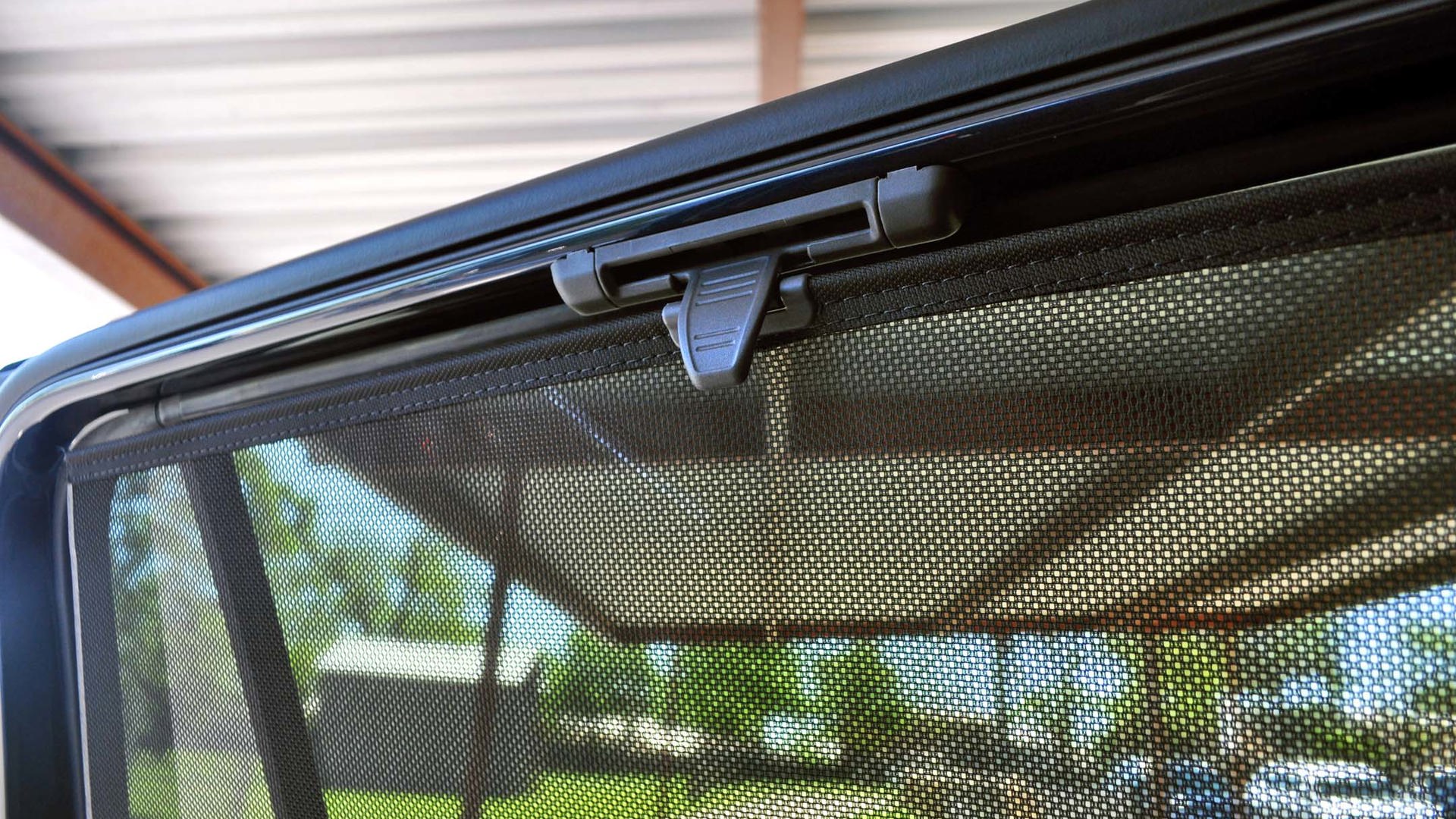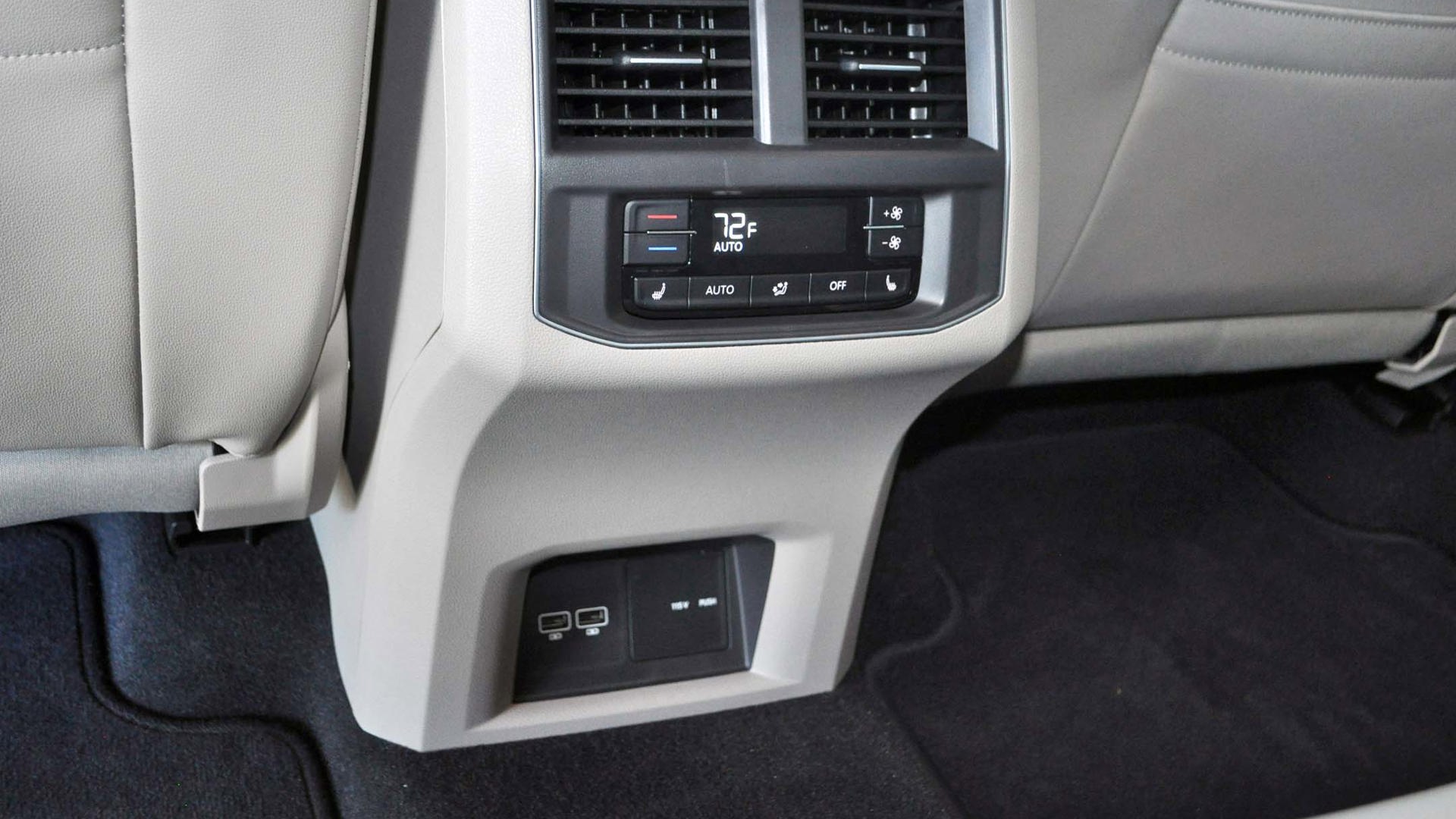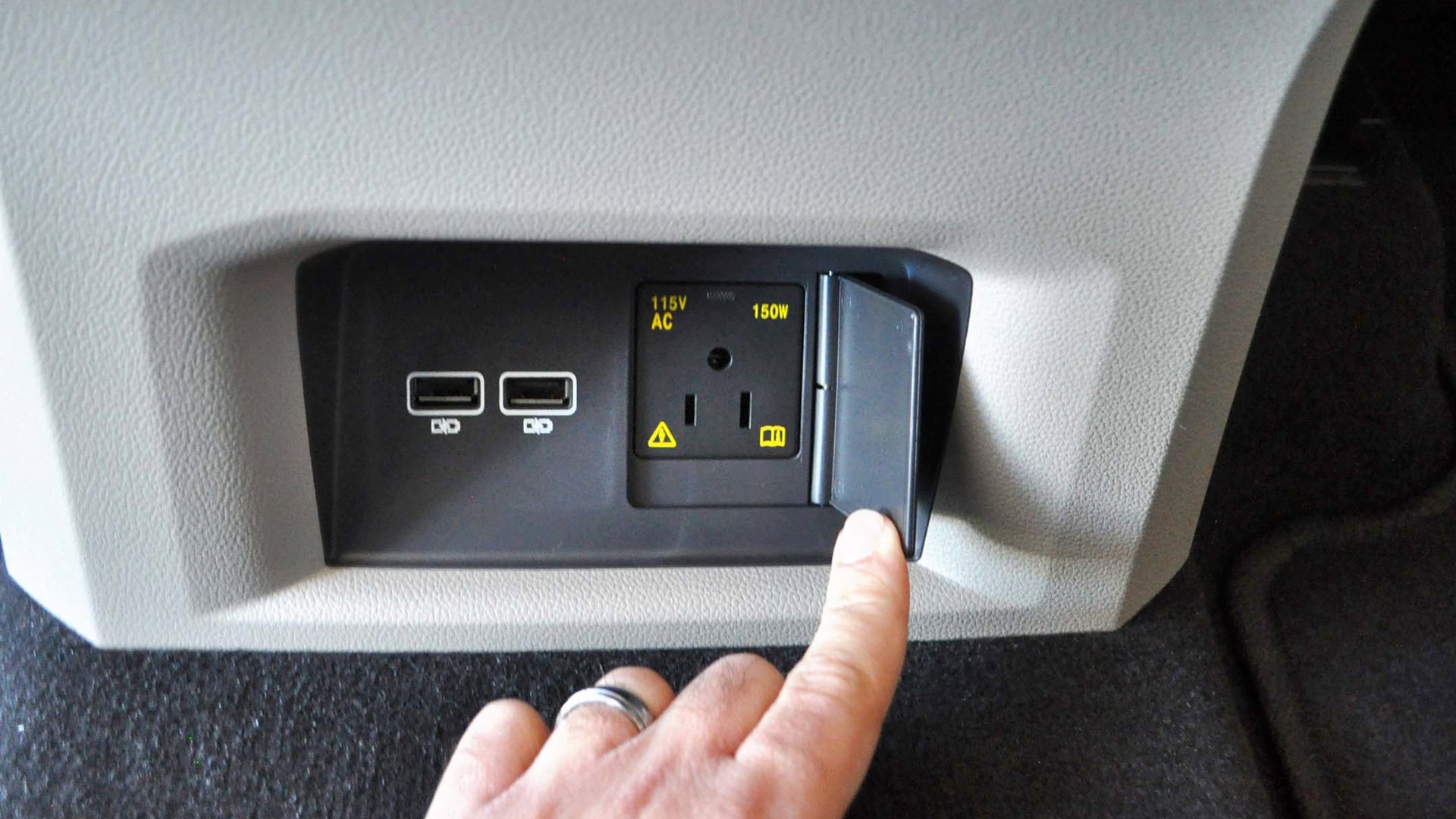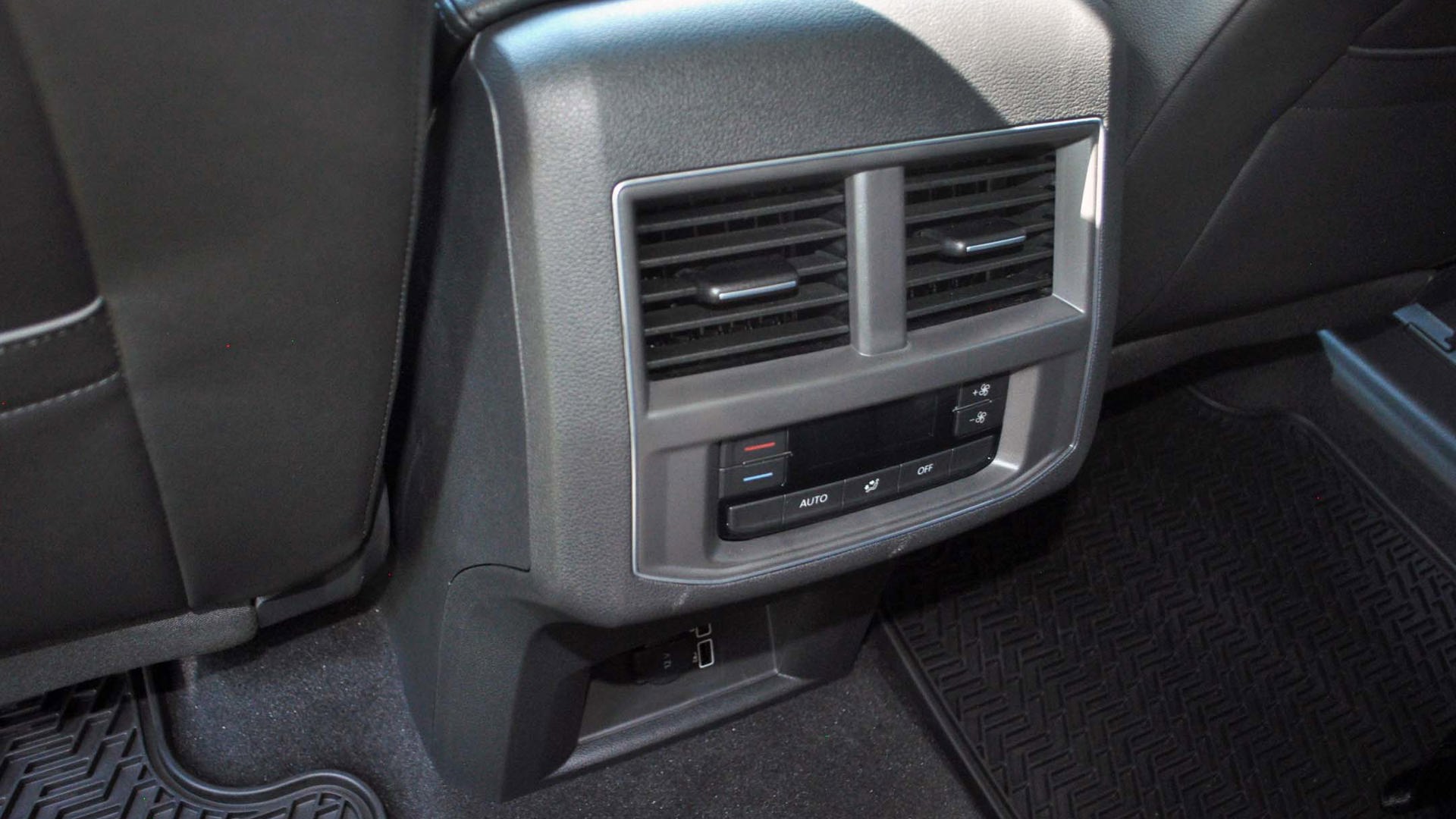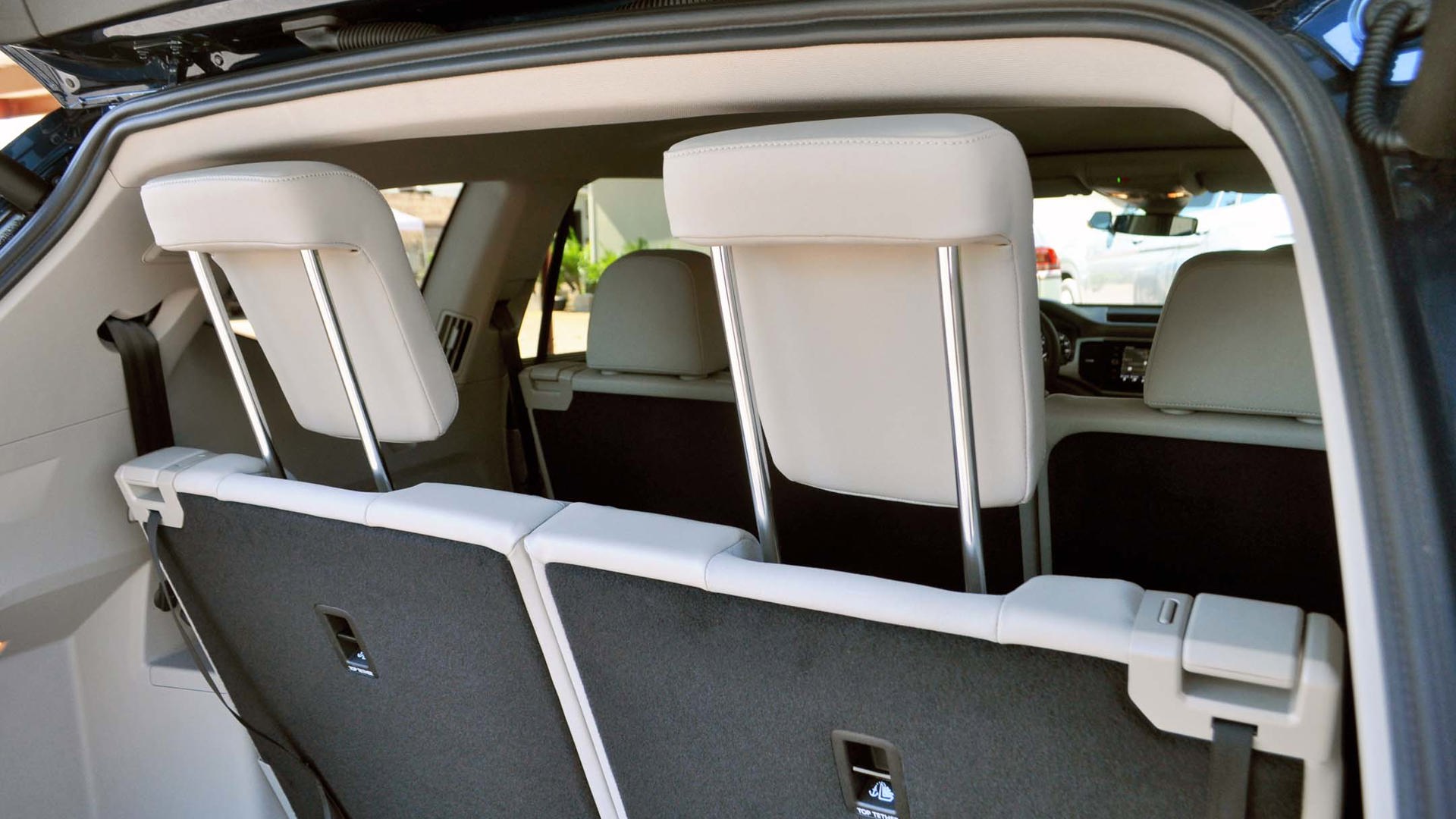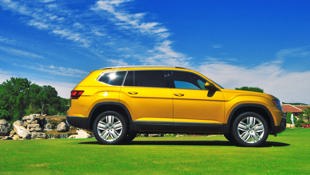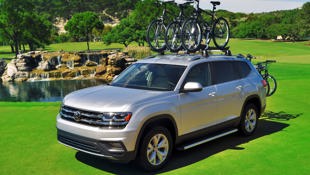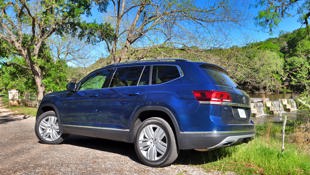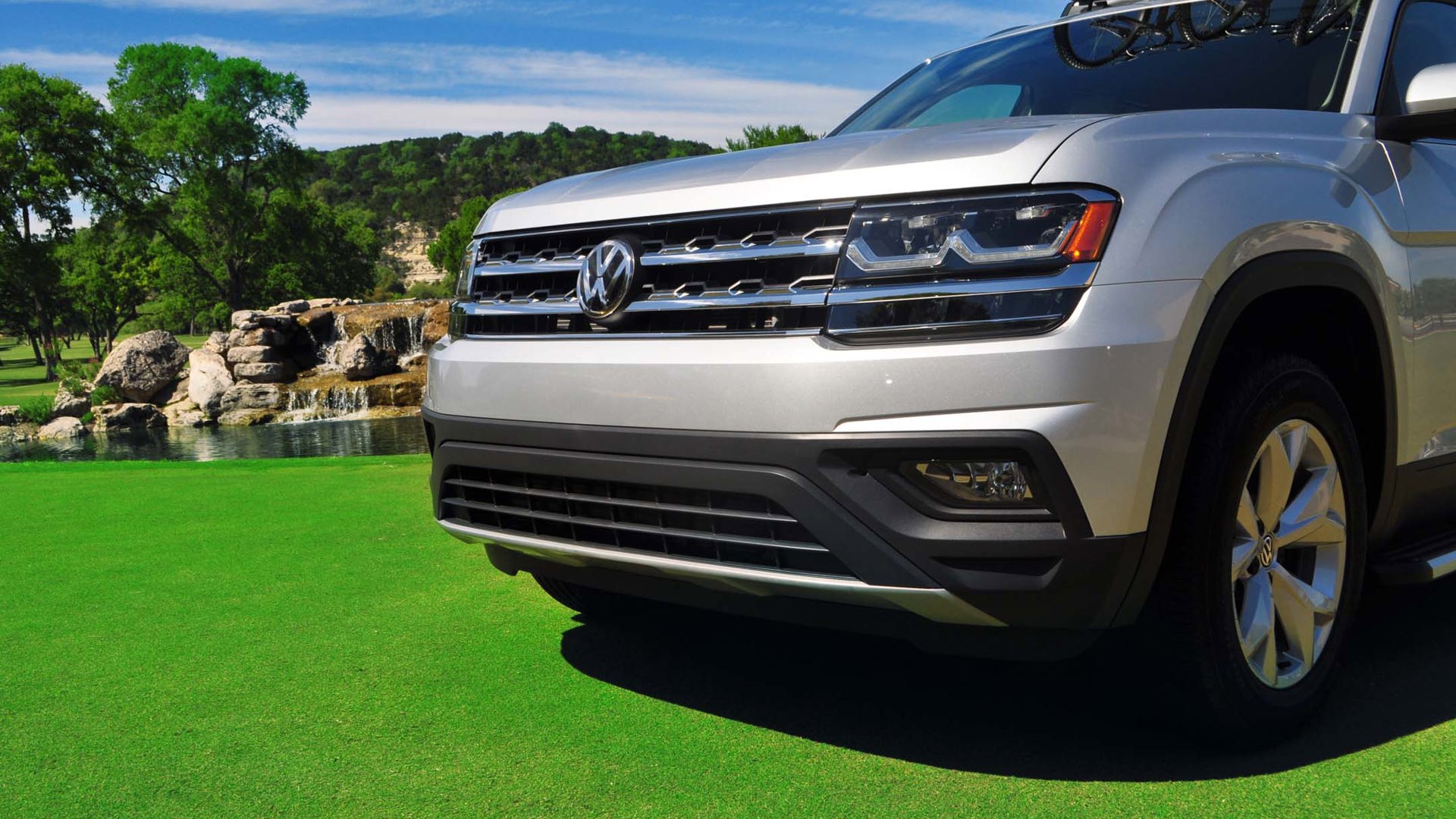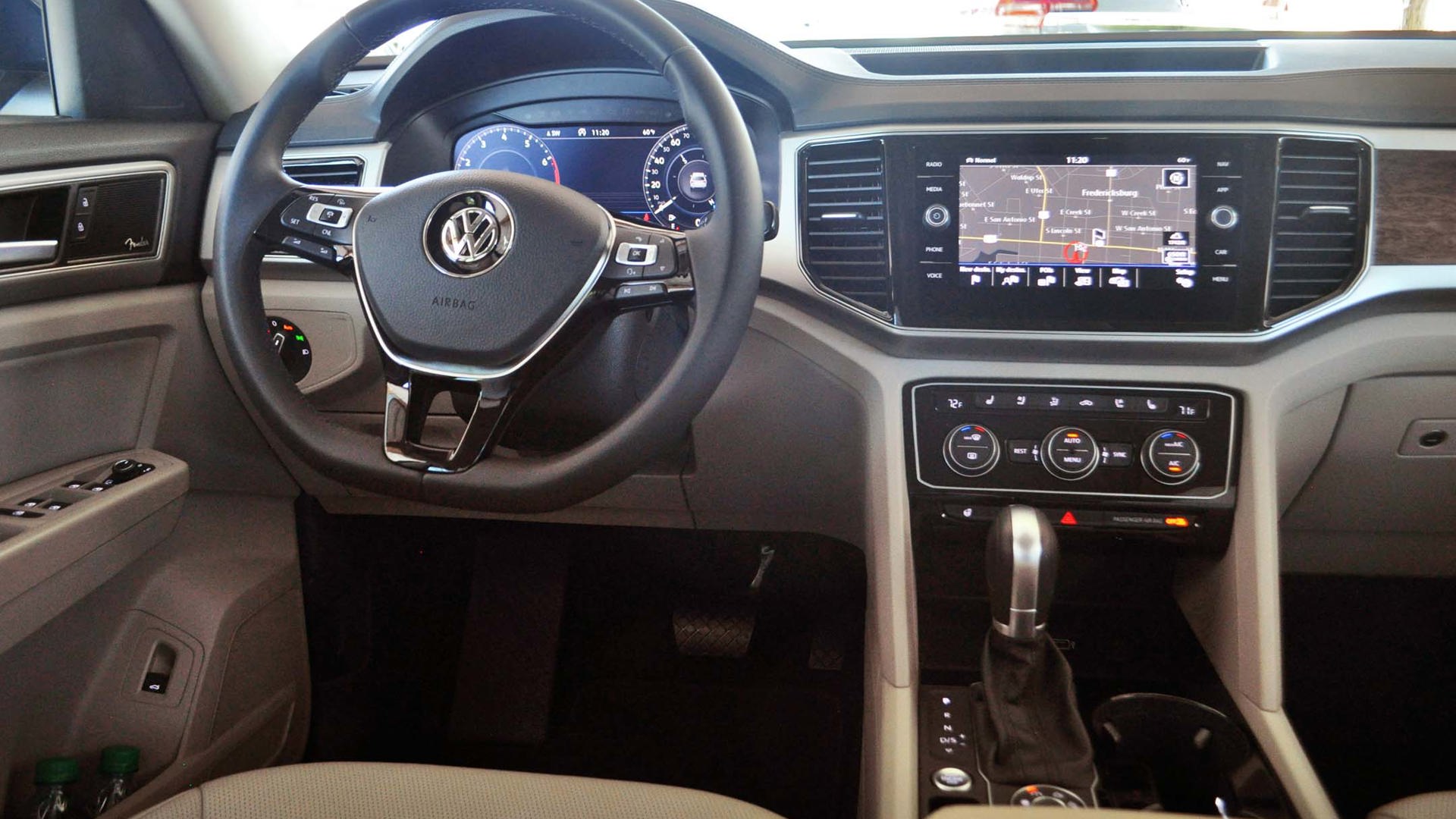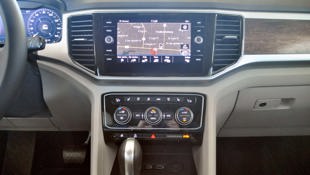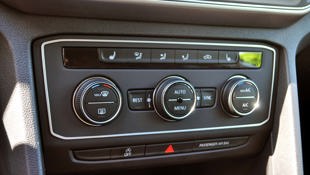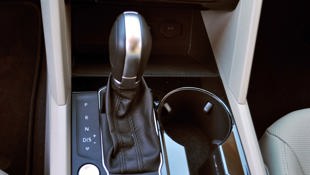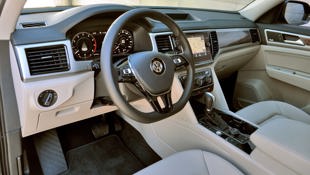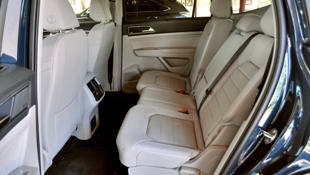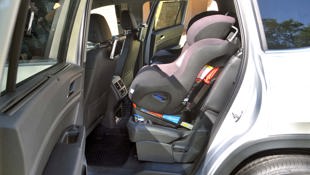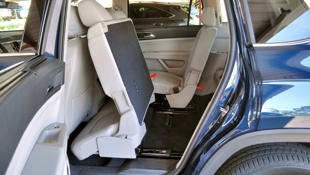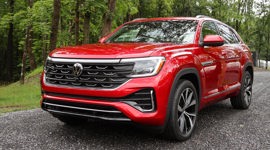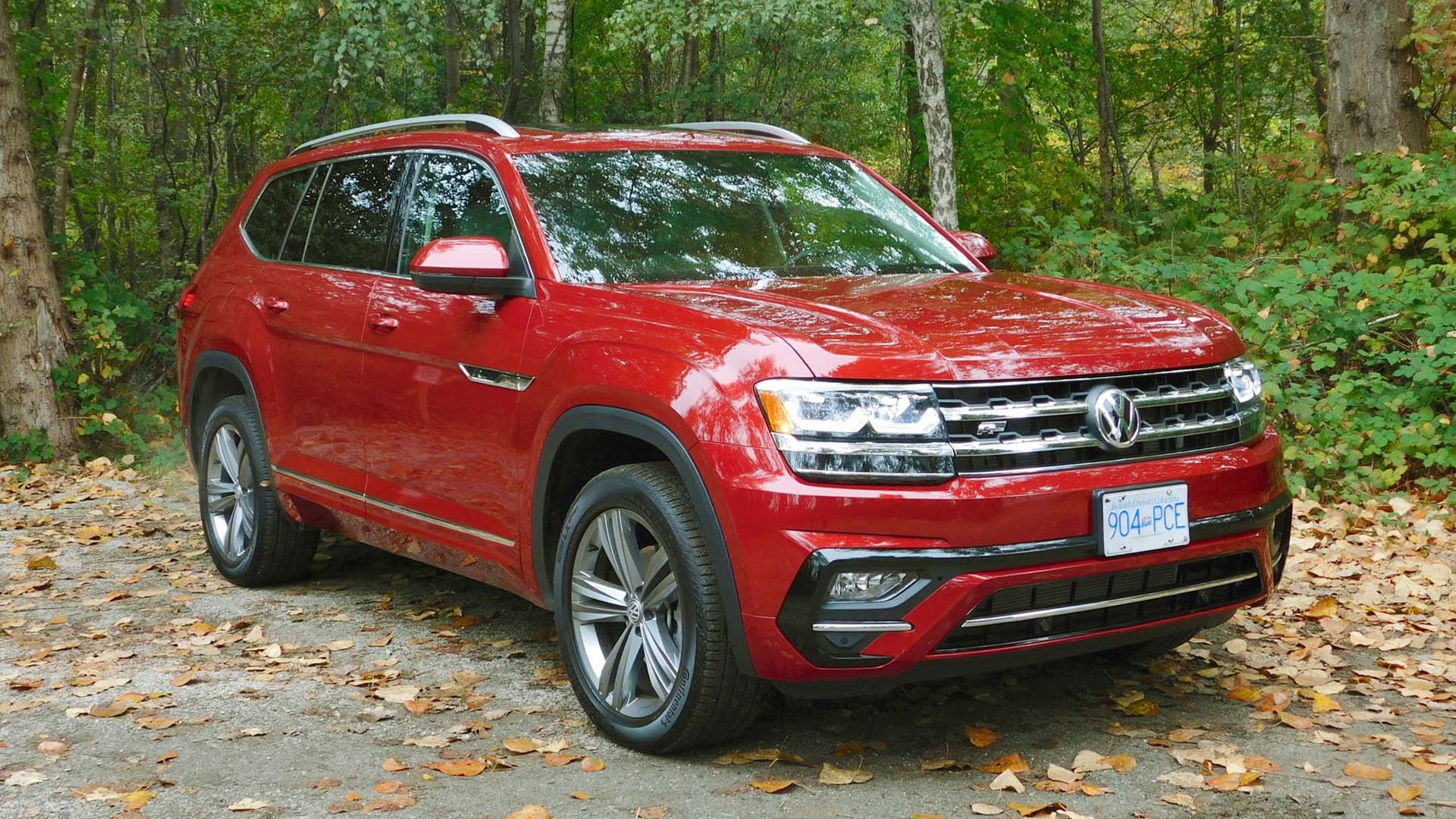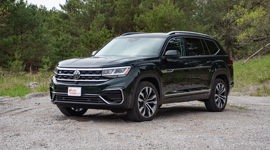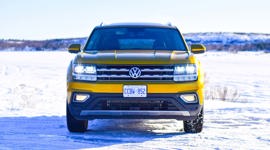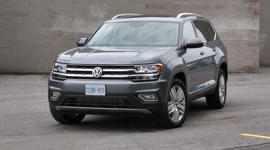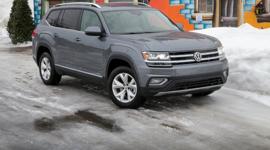BOERNE, Texas – You don’t need four or more offspring to need six seats in your family hauler. Even with our two boys, we’re often packing in carpooling friends to practice, aging grandparents, or just separating our youngest from his grumpy teenage sibling.
Volkswagen has finally made a serious effort to reach folks who want a real third row, real family practicality, and a real smooth ride to go with it.
The 2018 Volkswagen Atlas is the German firm’s offering for such folks, and it’s an all-new people-mover extraordinaire. Don’t call it a replacement for VW’s brief minivan flirtation with the short-lived Routan, the re-badged Dodge Grand Caravan that was missing the trick Stow ’n Go second-row seats and, perhaps more importantly, the big discounts that help move these minivans quickly.
Still, Volkswagen wants to capture many of the same customers that see value in having three rows of seats and plenty of cargo room for long-distance trips, no matter what the season. And thus we have the bulky Atlas filling this sizable niche in the growing and much more profitable all-wheel-drive three-row SUV market, its international launch taking place just outside San Antonio, Texas, to reinforce that bigger-is-better message.
In fact, the only aspect of the Atlas that didn’t loom large was the amount of time we had to sample it – although our three hours or so of seat and photography time was enough to conclude that Volkswagen has finally made a serious effort to reach folks who want a real third row, real family practicality, and a real smooth ride to go with it.
Blunt styling may appeal to traditionalists, perhaps
Some may argue that there’s not a whole lot of design wiggle room when it comes to styling large two-box SUVs, which tend to be square-ish and blunt-shaped to appeal to traditional folks who typically buy with spaciousness as a key consideration – and straight edges maximize interior dimensions. Sure, there’s a unique character line that starts at the front headlights, mimicking the wheel arches and bisecting the fuel flap, and continues on right to the rear taillights, which provides some visual uniqueness, as do the full LED lights up front, standard on all trim levels.
But what struck me most about it visually was the massiveness of the wheel and fender gap, making it look like the Atlas is permanently tiptoeing its way over treacherous rocky terrain. The low-profile 20-inch tires equipped on all the well-loaded Atlas models at the event likely contributed to this visual effect, as did the black lower-body cladding that runs along the bottom and up around the inner fenders of all models, no matter the colour.
It’s similarly conservative inside, with a fine display of that now-typical Volkswagen quality that may be a touch less Germanic and solid in its materials and construction than a pricier Touareg, yet is still solidly refined, pleasingly luxurious and tastefully appointed. Our fully loaded equivalent of the Execline trim comes standard with a kicking 12-speaker, 400 amp Fender audio system, while all models will receive Apple CarPlay and Android Auto compatibility.
Massive amounts of room upfront help driver and front passenger stretch out in any direction. Those coming out of minivans may miss the folding armrests to rest your elbows on long trips, but the elevated centre armrest helps here. The Atlas can be configured as a six- or a seven-seater, with a three-person (or three-child-seat) bench or twin captain’s chairs available on the top two trims.
Refined but thirsty with V6 and 4MOTION all-wheel drive
The Atlas is based on VW’s multi-talented MQB architecture, which is used for subcompact cars as small as the upcoming Volkswagen Polo in Europe to this five-metre-long (5,036 mm) seven-passenger mammoth SUV. That means the Atlas was designed to accommodate multiple types of powertrain, although only two gas engines will be available for its launch year: a 2.0-litre four-cylinder turbo, with 235 hp sent to the front wheels, and a 3.6-litre VR6 engine offering a stouter 276 hp and 266 lb-ft of torque.
The V6 provided ample oomph from down low in the Atlas, though throttle response is noticeably softer than in the obviously smaller and lighter Passat V6. Still, it stays quiet and unobtrusive at both city and highway speeds, although the blocky dimensions of the Atlas does produce noticeable wind noise at highway speeds, enough so that both my driving partner and I checked to make sure all windows were closed when they already were.
To be fair, this section of Texas backroad asphalt was straight but especially rough and grumbly, so the Atlas quietened down considerably when on actual interstate highways.
At least at launch, some may be disappointed to hear there will be no diesel or hybrid option, as with the Toyota Highlander Hybrid and Chrysler Pacifica Hybrid. That’s unfortunate for those who may be looking for a bit more fuel efficiency than the 14.0 L/100 km (20 mpg) we saw on our drive – notably higher than the 12.1 L/100 km overall figure that VW estimates its official government numbers will achieve.
Both engines come with eight-speed automatic transmissions, but sadly none of them offer paddle shifters behind the steering wheel similar to most large three-row SUVs. There is a slide-it-over, tip-up and -down Sport mode available, but the languid pace of the shifts won’t have you yearning to use it.
The V6 will be the first ones to arrive at Canadian dealers in May, and will come only with VW’s 4MOTION all-wheel-drive system, followed by the four-cylinder engine a couple of months later, as they are on a later production schedule. This means we didn’t get a chance to sample the four-cylinder, front-wheel-drive Atlas, though the four’s horsepower and 258 lb-ft of torque numbers both look temptingly close to the V6, even if made at a higher rpm.
Comfort and spaciousness a large part of the Atlas practical appeal
But that base version, once it arrives in early summer, will start at a very reasonable $35,640, right in line with the base Highlander and Pacifica models, but less than seven-seaters such as the Honda Pilot. Even the entry Trendline model will offer Bluetooth, tinted glass, start-stop technology and 18-inch wheels and tires. Move up to the Comfortline, as most will, and a power driver’s seat, keyless entry and start, remote start, blind-spot detection and adaptive cruise – which can both bring the car to a full stop and get it moving again on congested highways – plus useful second-row sunshades are all part of the deal.
We drove the top end of the Atlas pricing spectrum, our Execline tester starting at $52,540, which includes LED taillights, automatic high beams and parking function, and a fully digital cockpit that can be reconfigured to the driver’s pleasure – a simpler and less flashy version of Audi’s virtual cockpit.
All these features and space added up to a wonderfully comfortable and refined driving experience, with the Atlas' comfort-oriented suspension settings soaking up the (relatively few) bumps in the road nicely, even with those low-profile tires. Curving roads didn't have the Atlas leaning noticeably at anywhere near sane speeds, which should help avoid car sickness for parents and kids alike, though obviously you could induce some leaning on highway ramps if you really tried to treat it like a sport sedan.
The cooled seats here also helped to keep the car's comfy leather buckets from becoming overly hot when parked in the sun or on long trips, and though personal preferences vary widely here, it never seemed to blow overly chilled air at your back or butt.
This Atlas also came with the super-useful power tailgate with Easy Open function, which allows you to approach the tailgate with your arms loaded with heavy groceries and open it a sweep of the foot.
That’s a major plus with this SUV, as its cargo area is massive, especially when you fold down both the third and second rows, which fold perfectly flat and can fit a standard sheet of plywood, says VW. When it comes time to transport lots of people instead, the second row easily folds up right against the front seatbacks with one lever lift, from either side of the Atlas, to allow for easy access to the third row. The second row can also be moved back and forth, and with the second row placed just a little forward, my six-foot frame had no issues in the third row, where cupholders and cubbies abound.
In all, the 2018 Volkswagen Atlas provides all the practicality, comfort and all-weather confidence many families are looking for, and if its design calls to you, it is certainly worth of a test drive to experience it.
